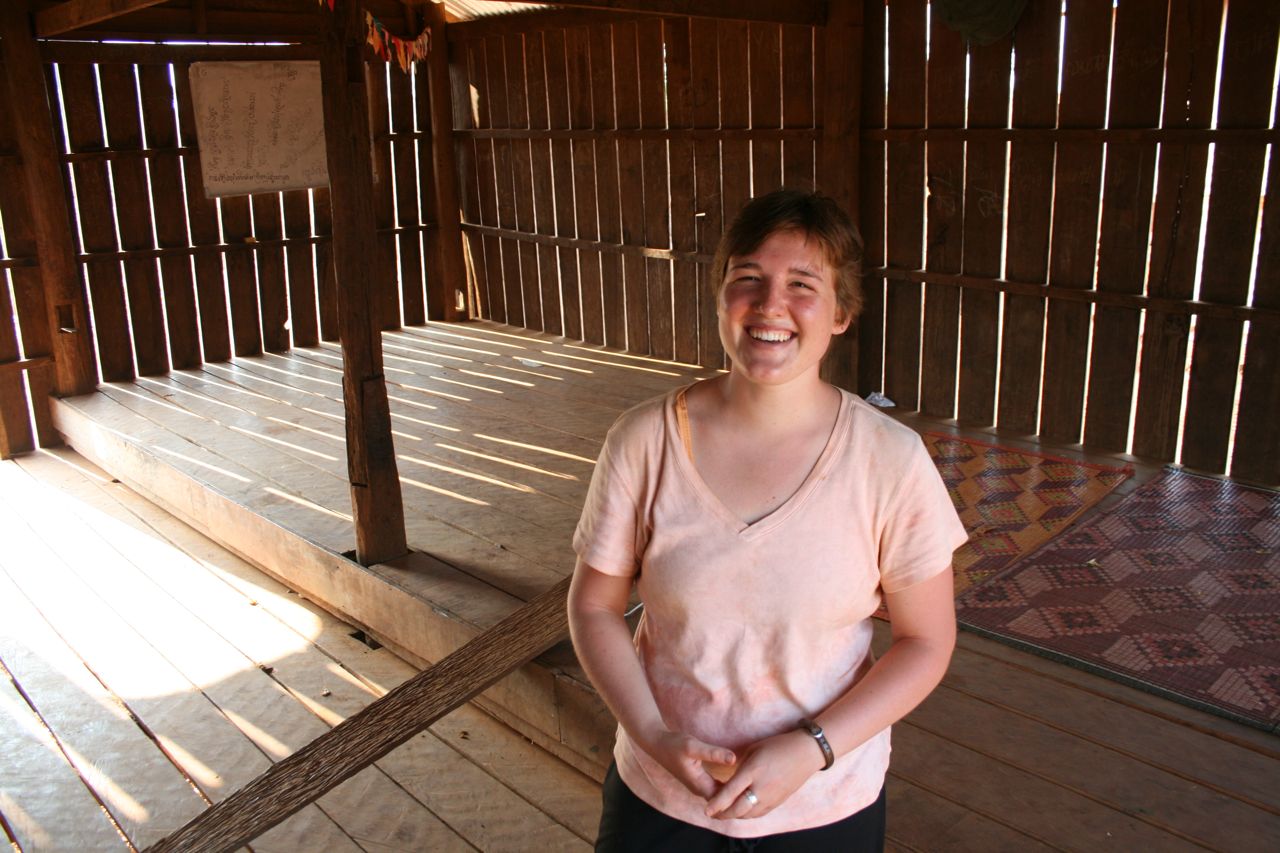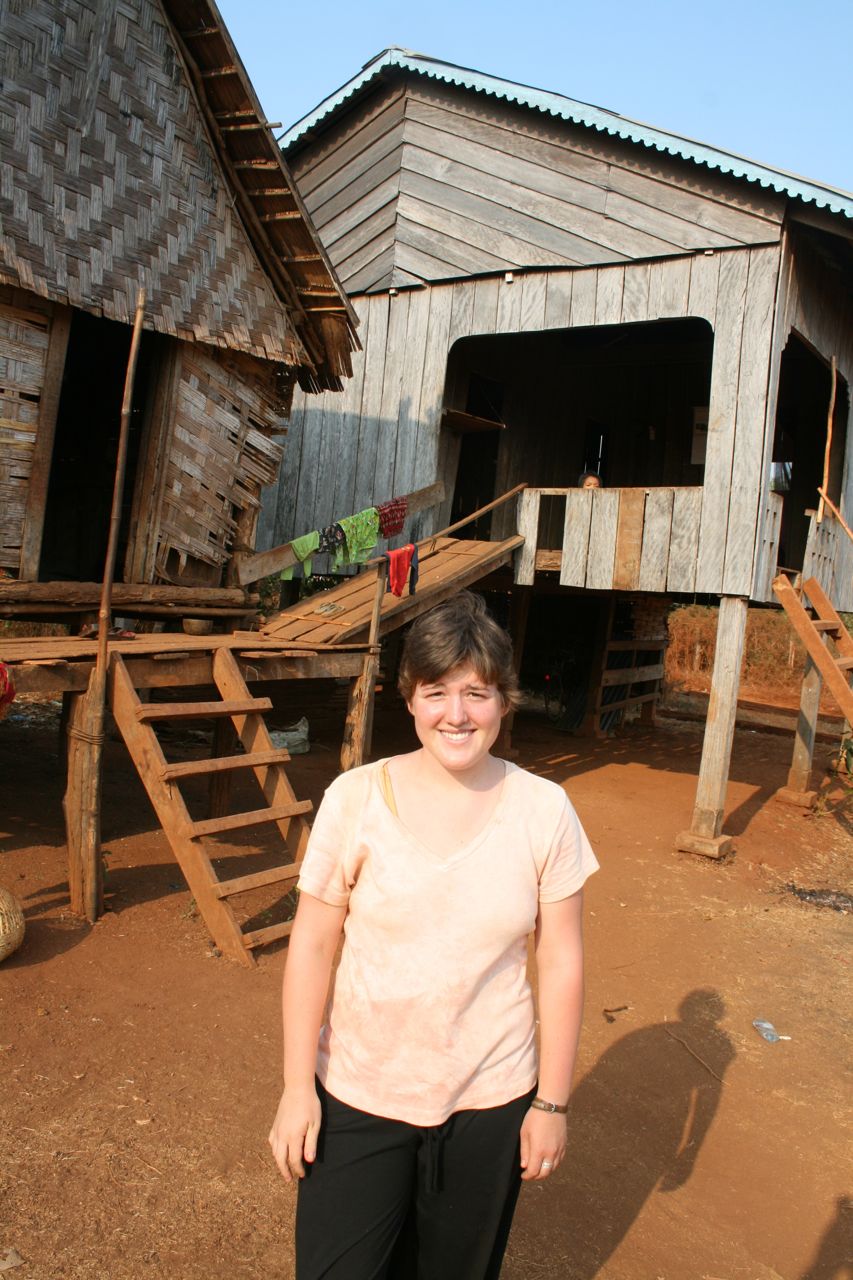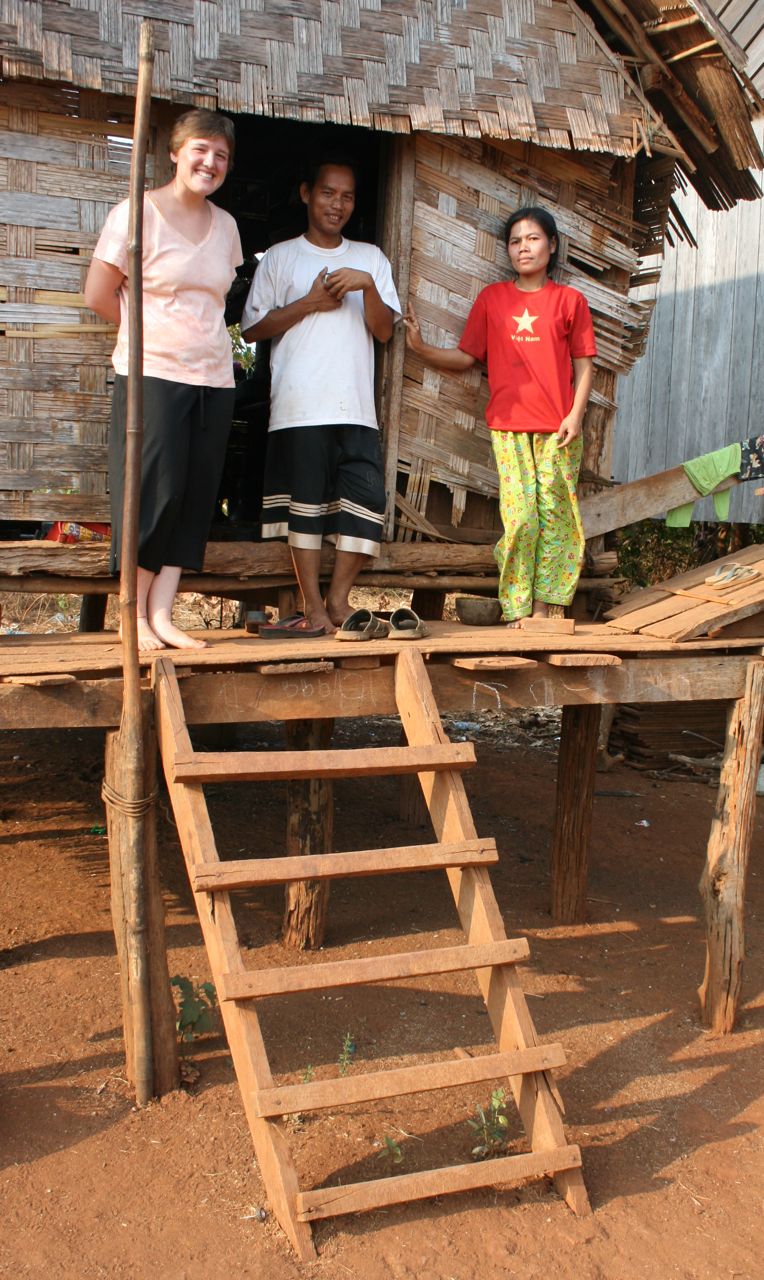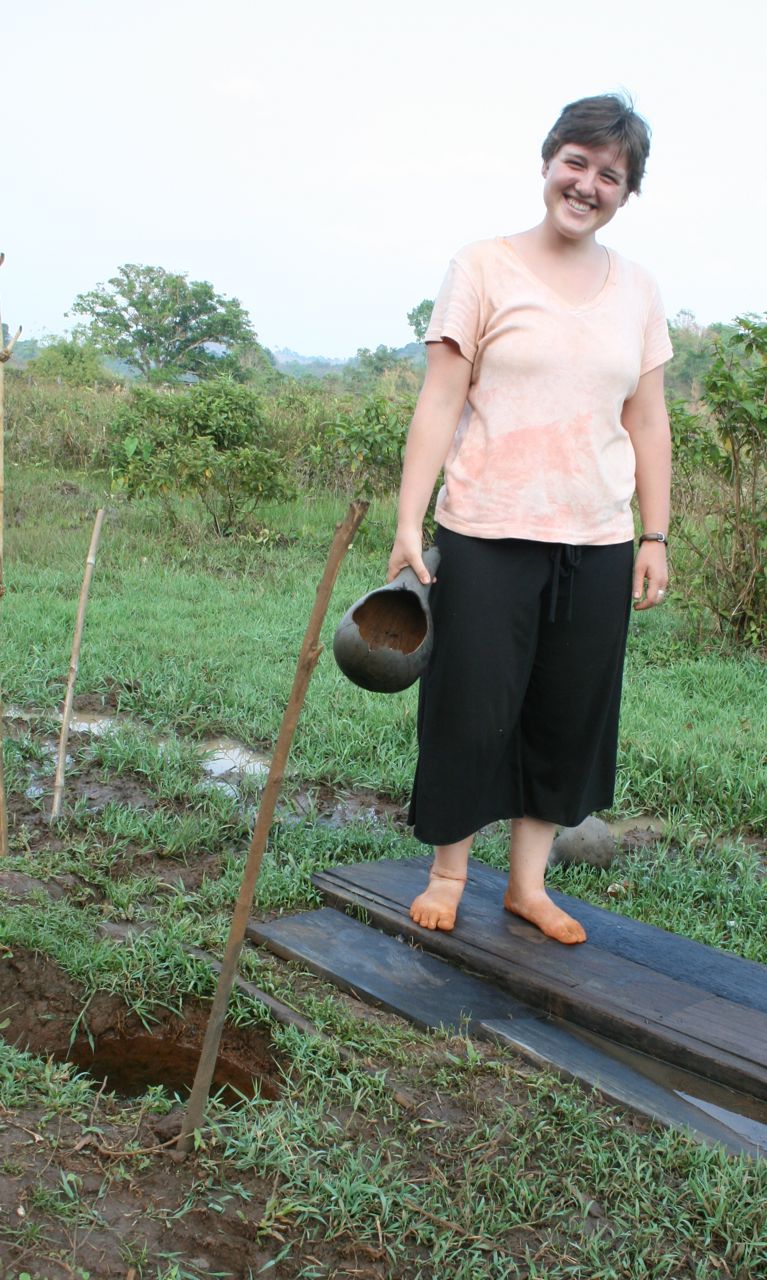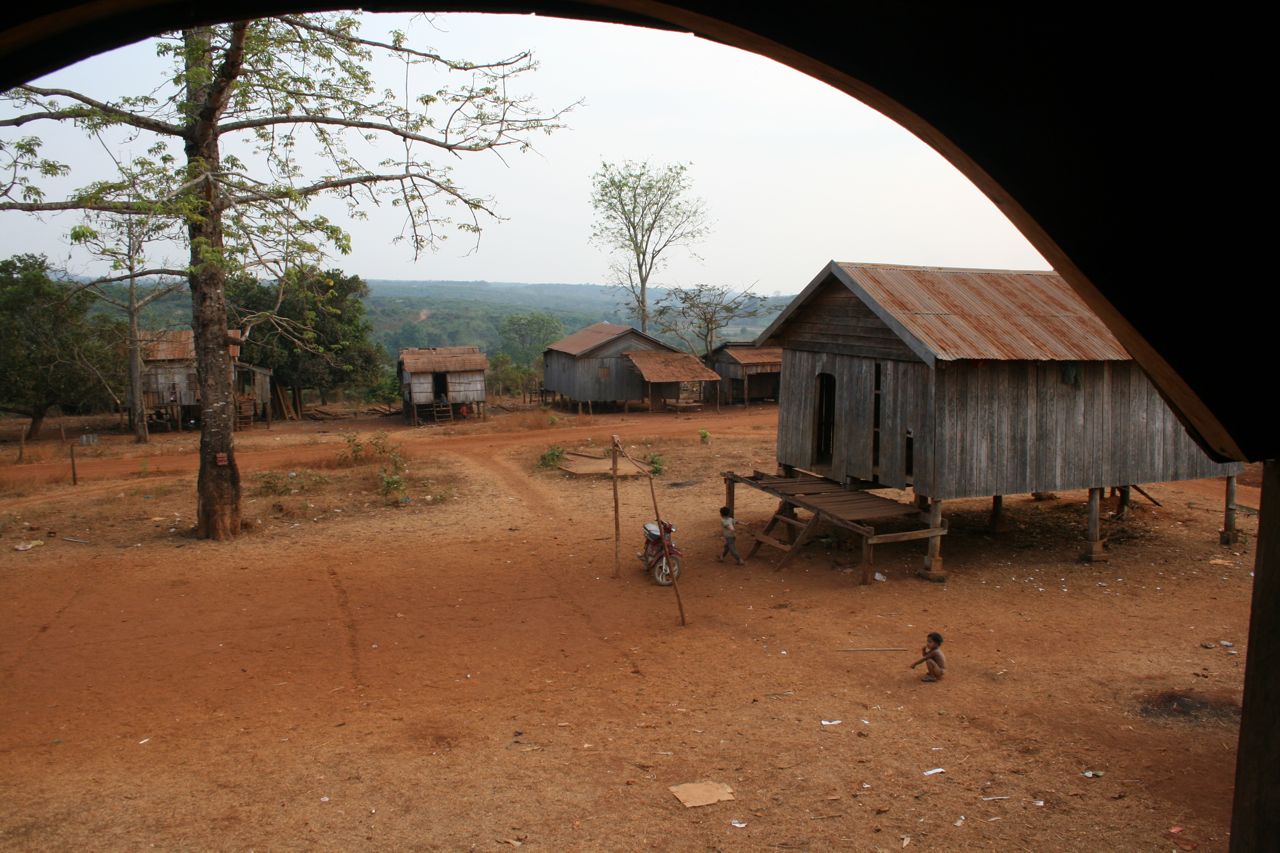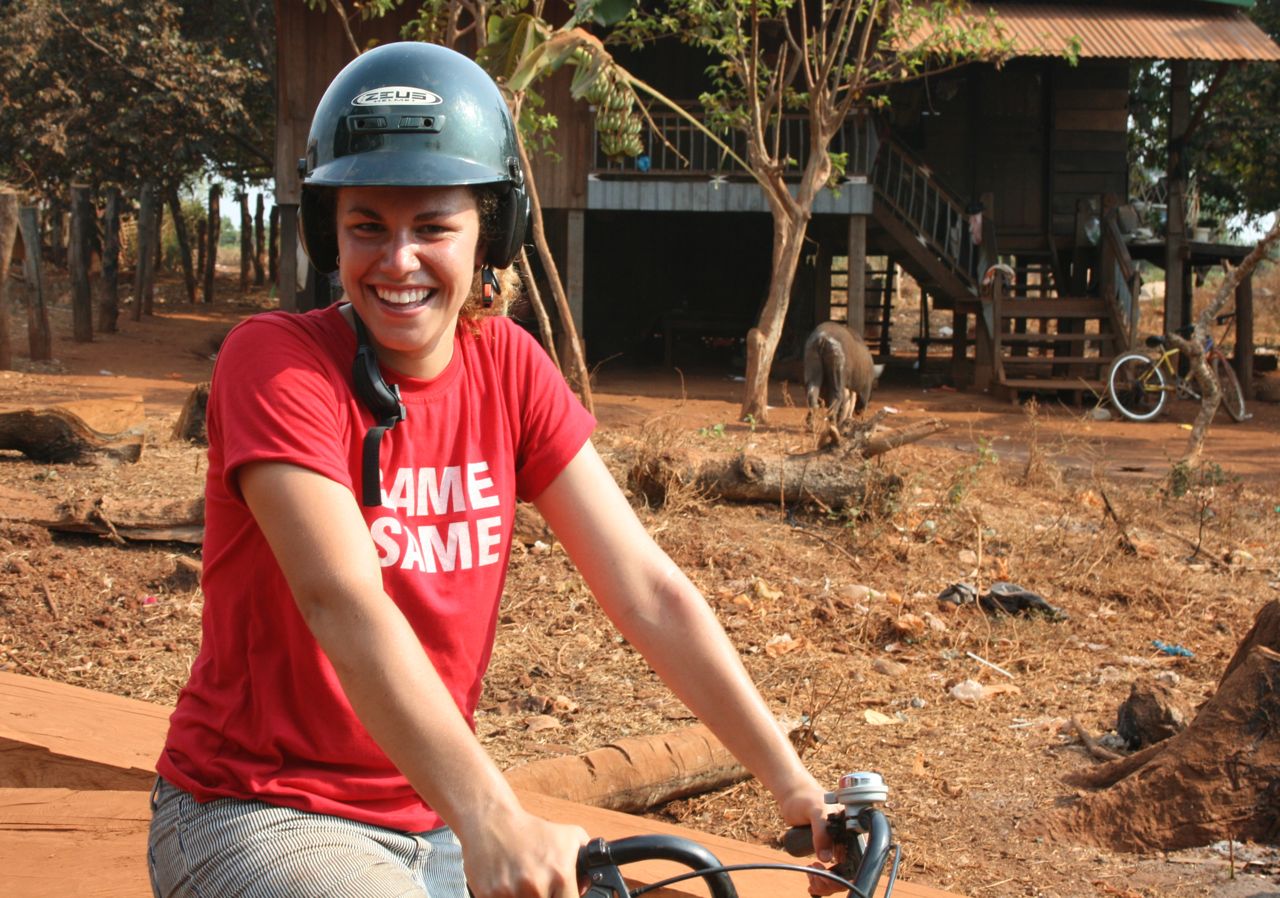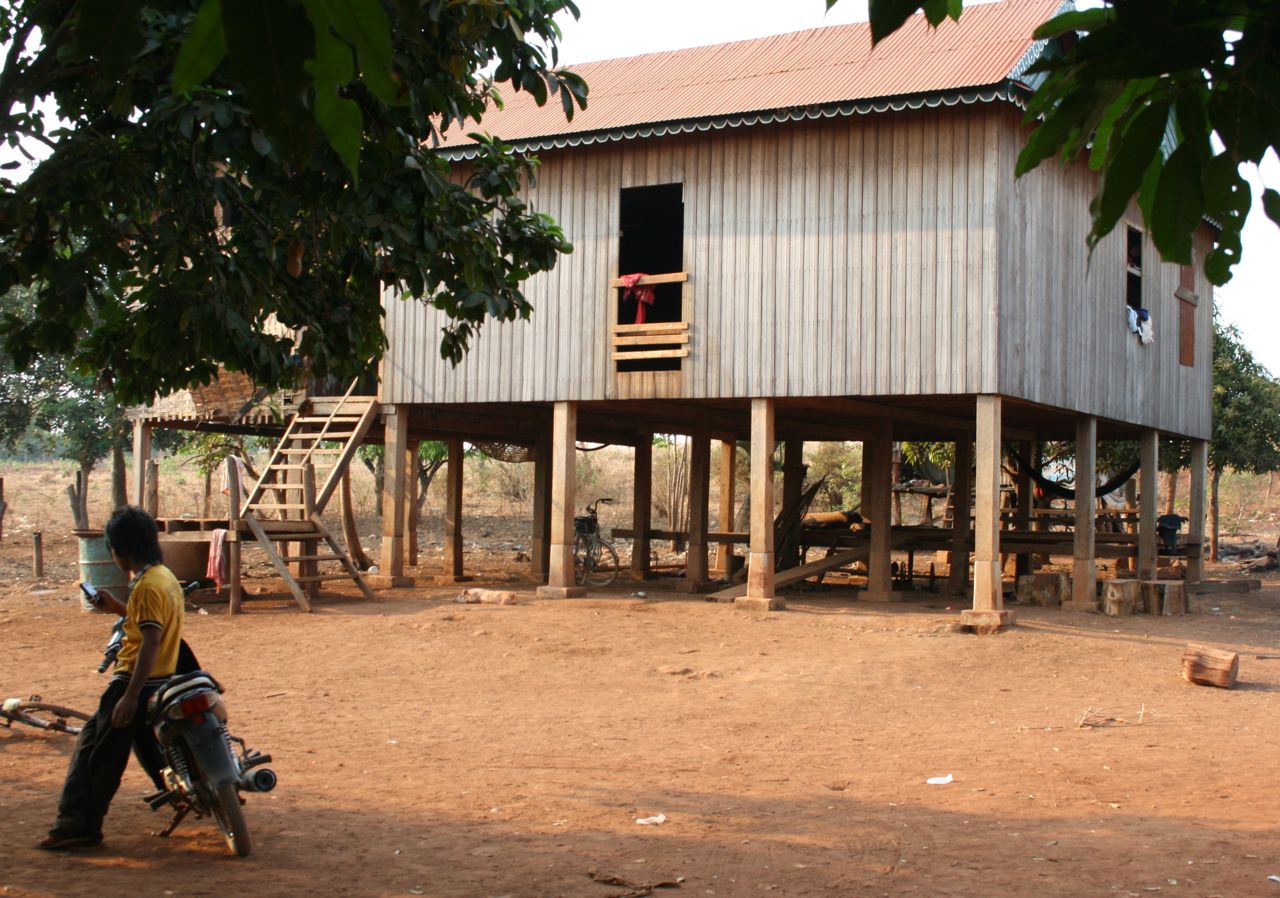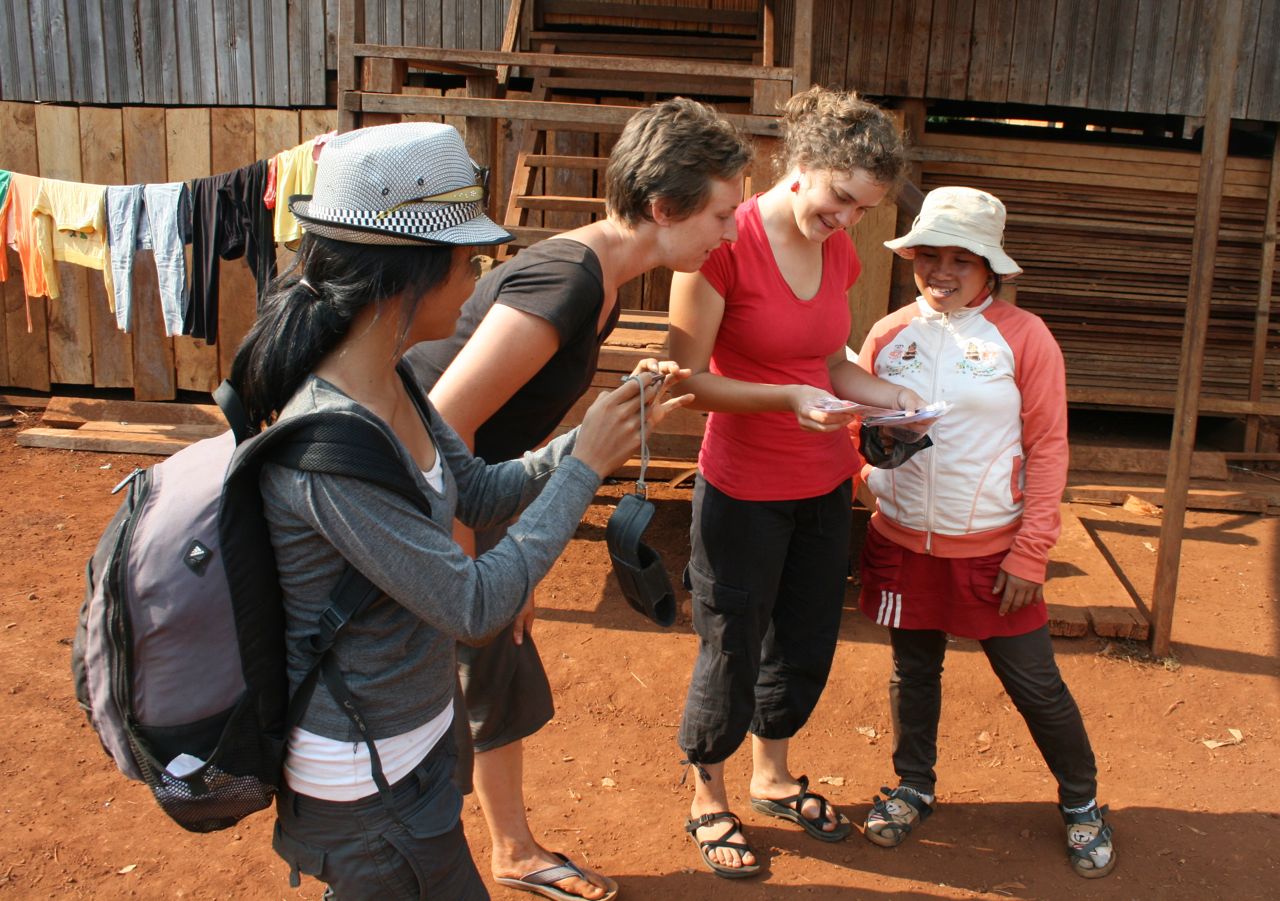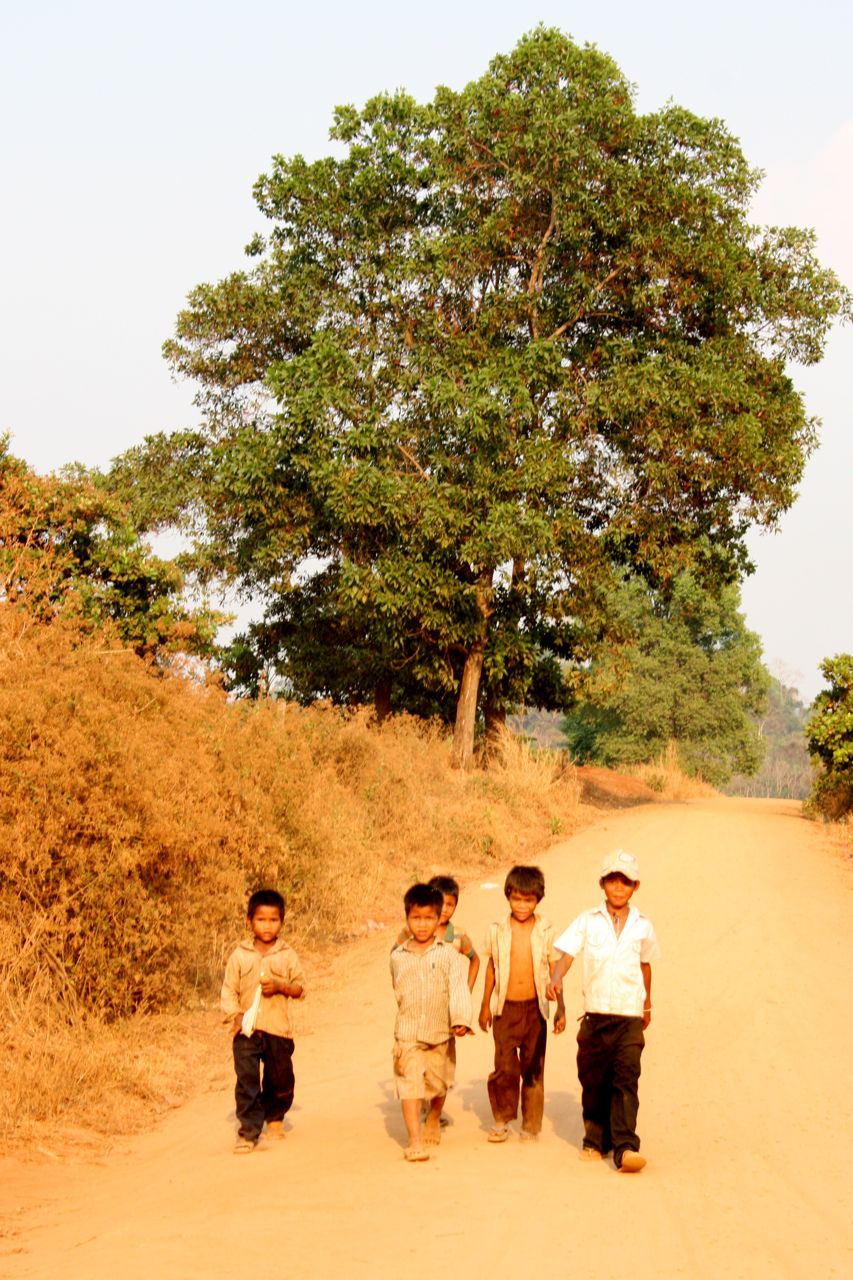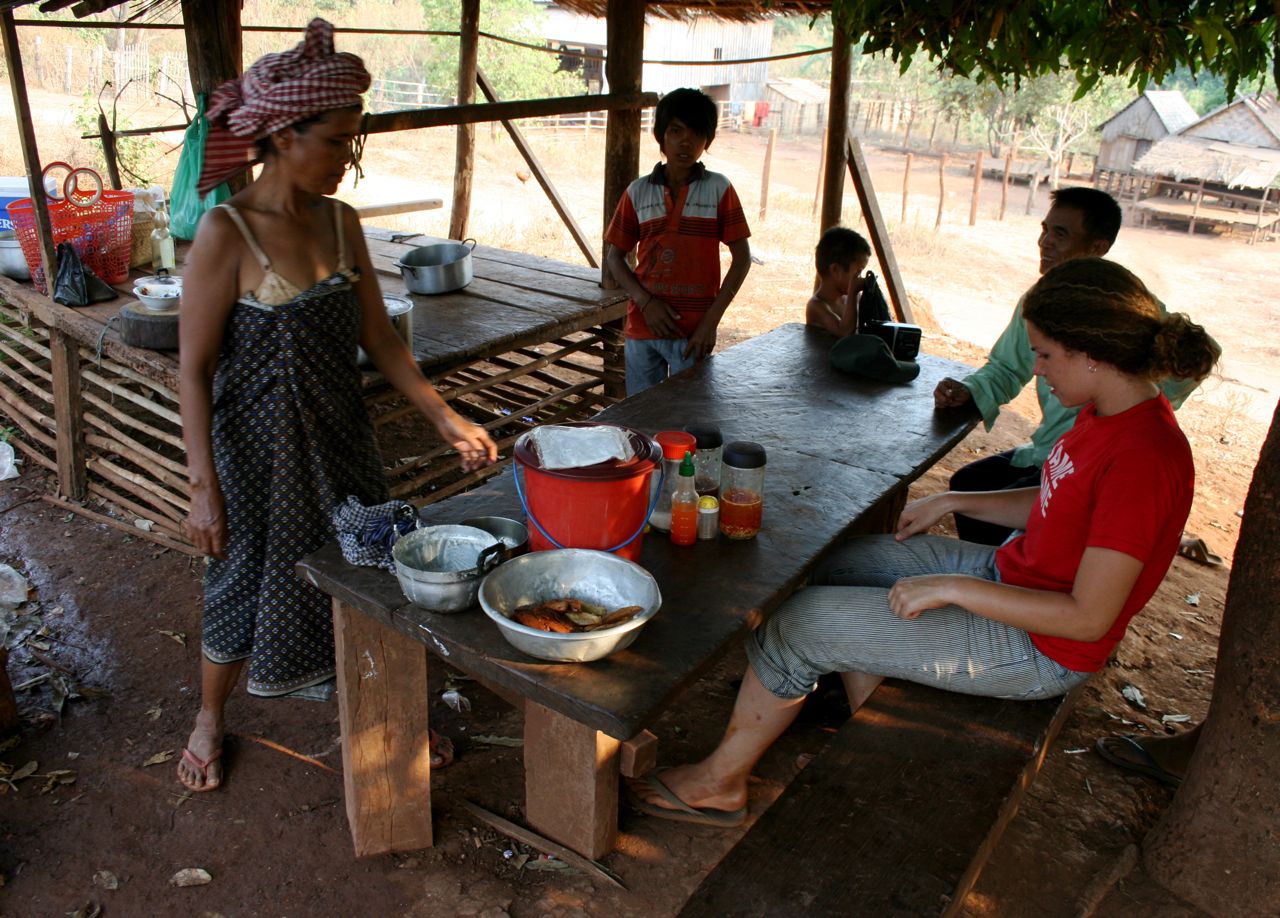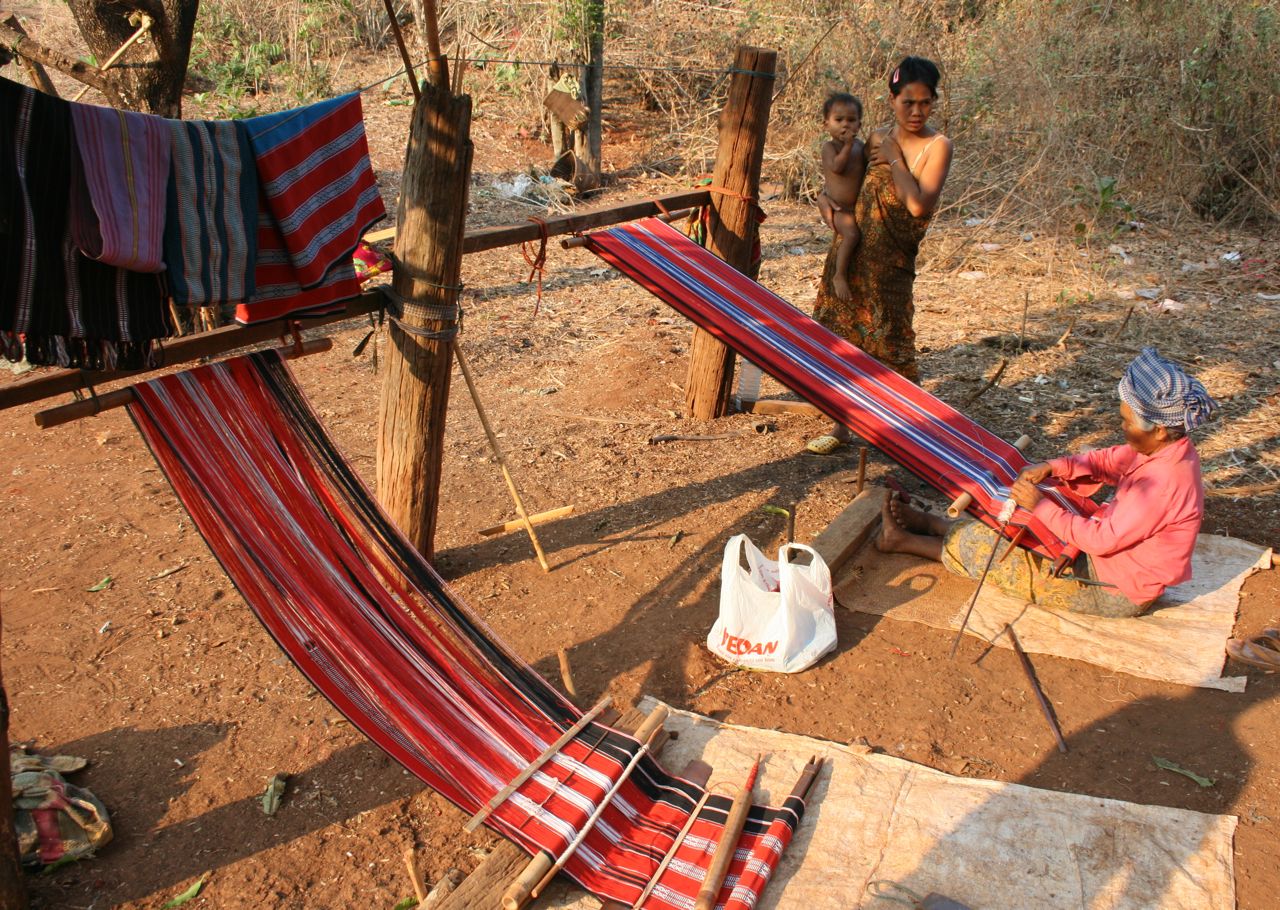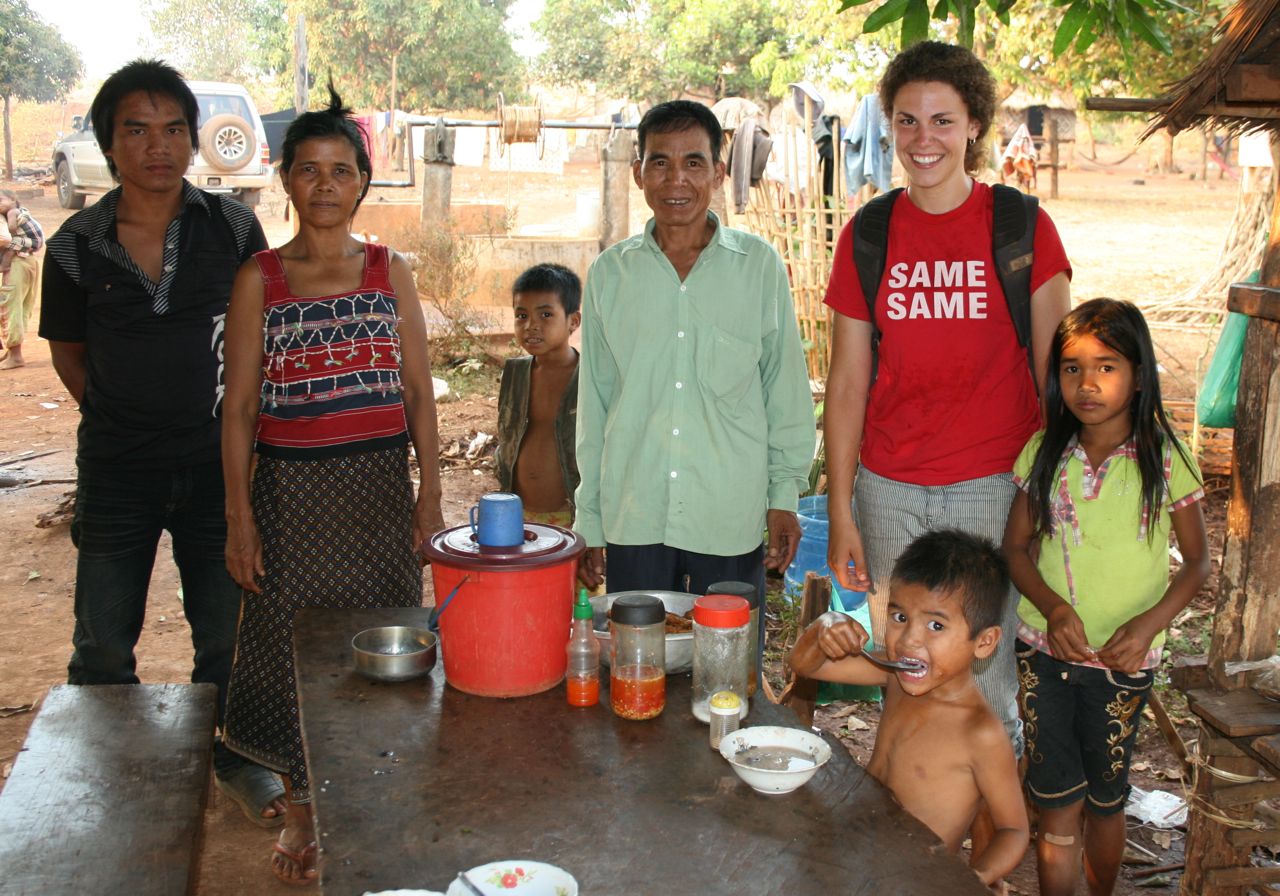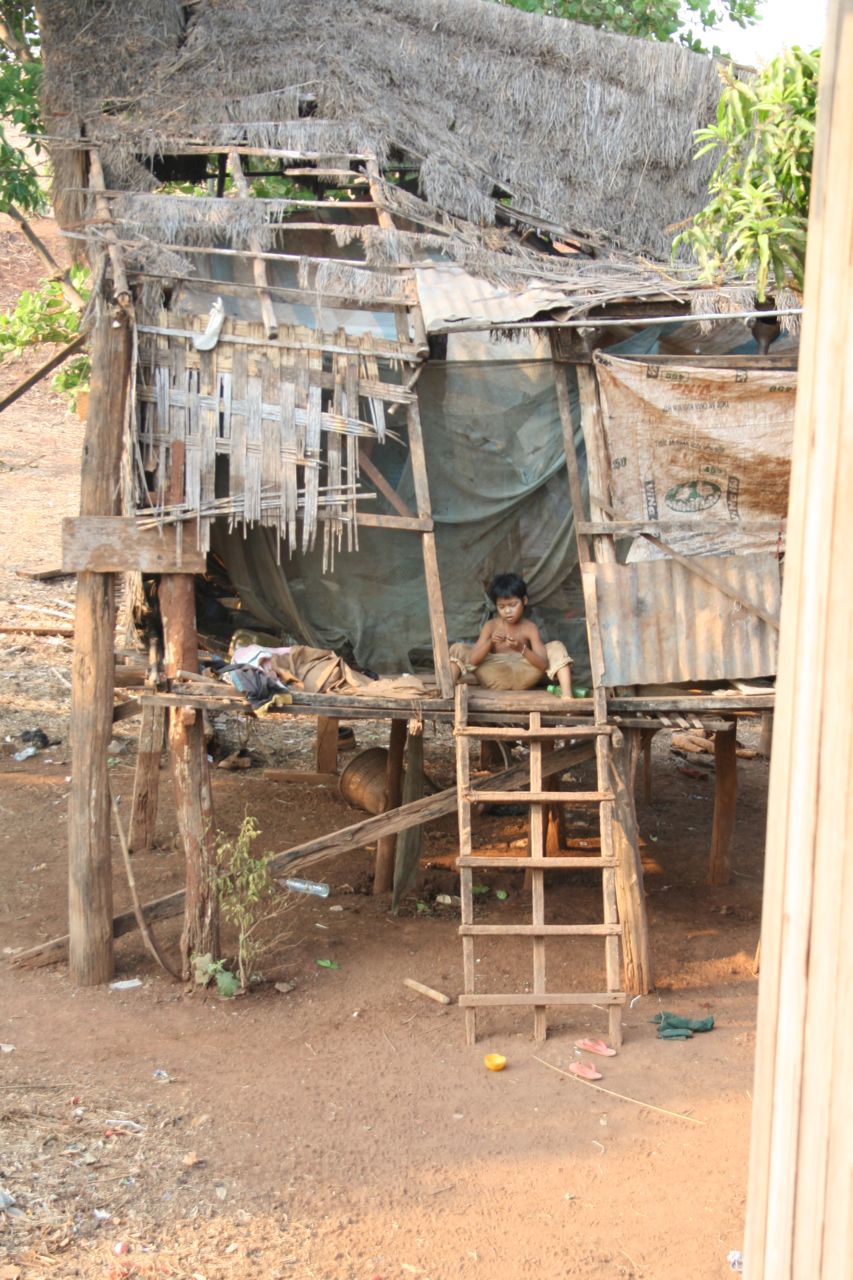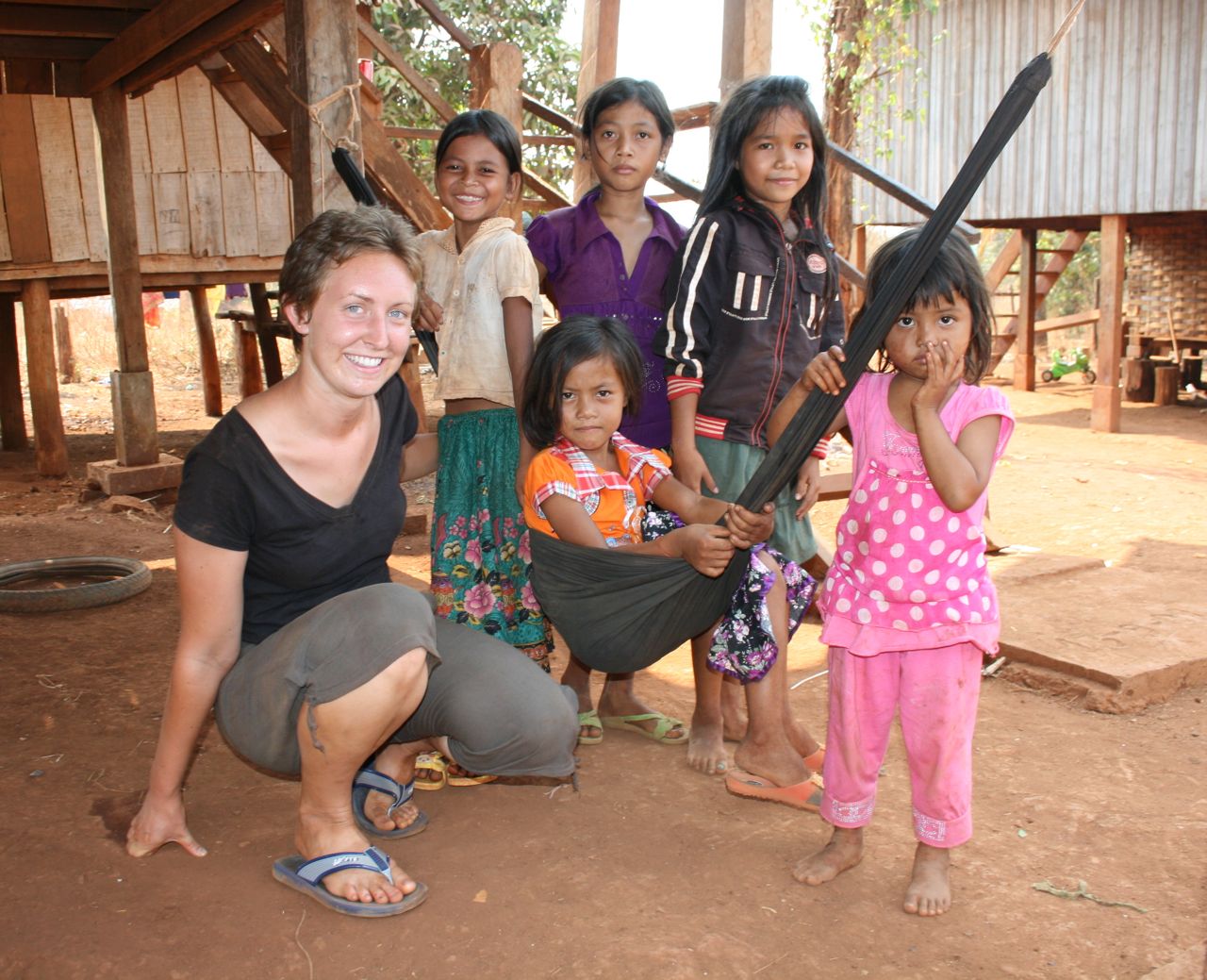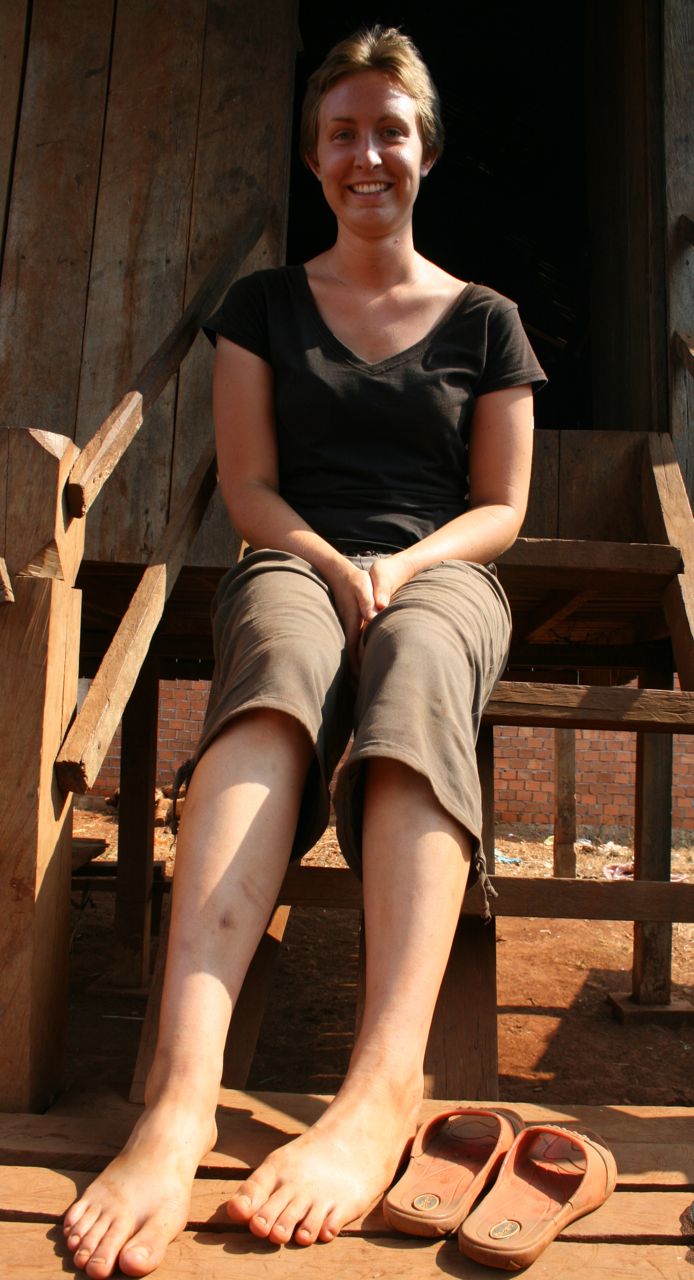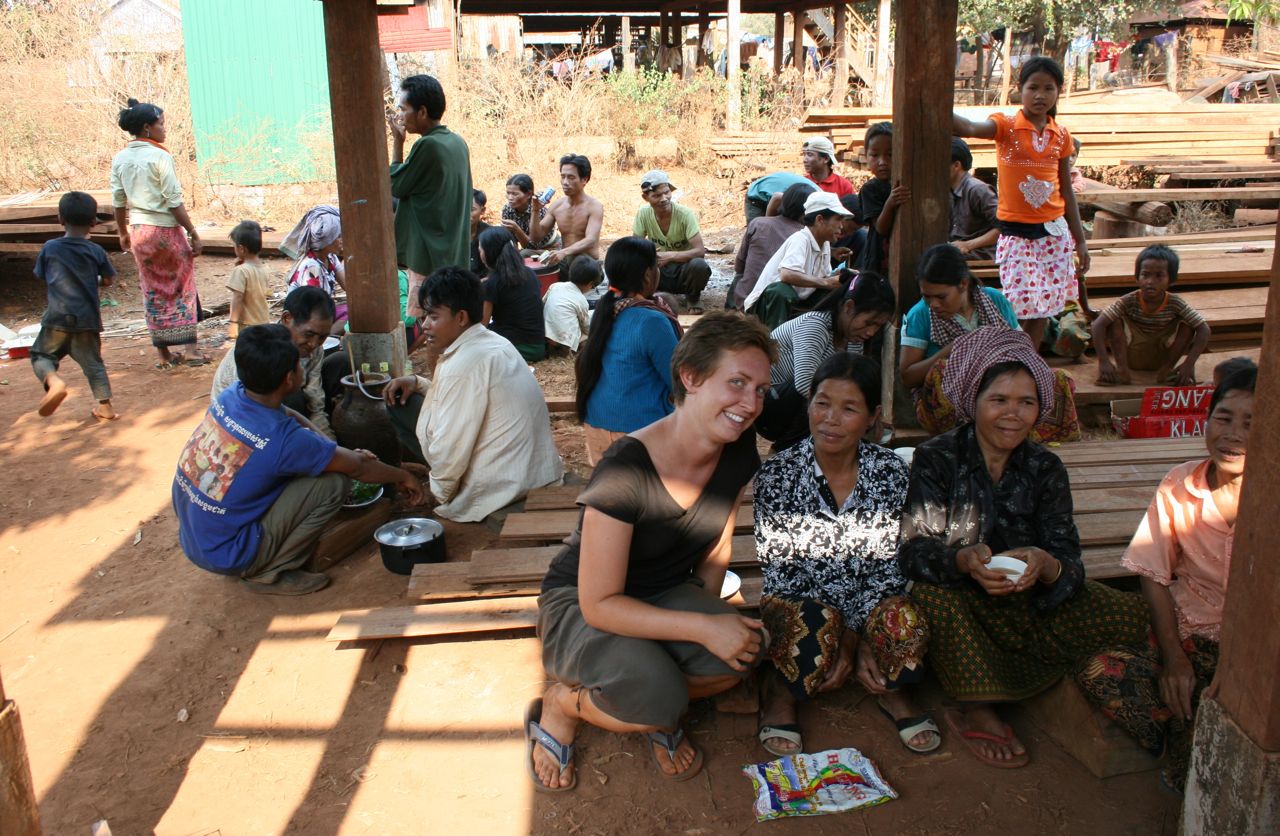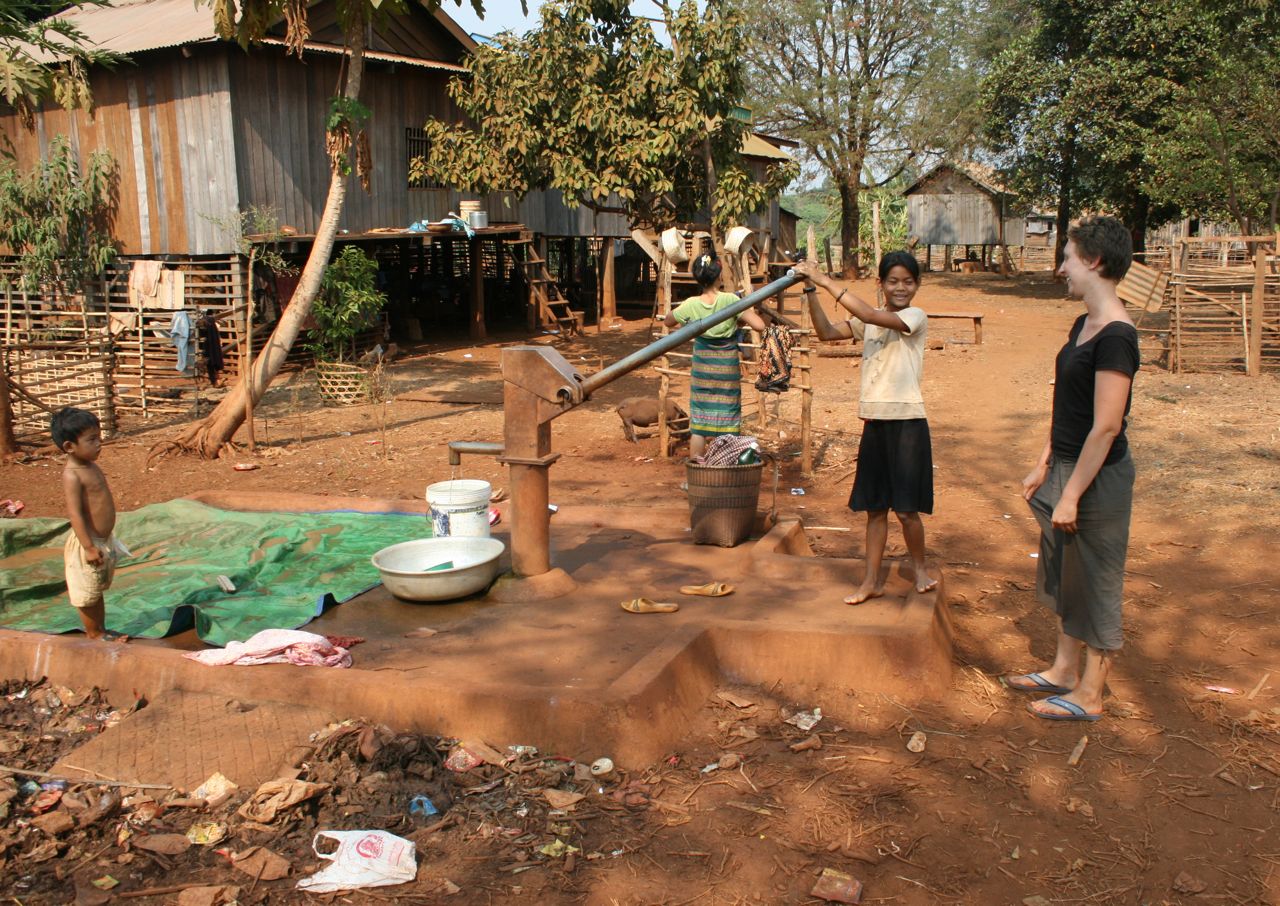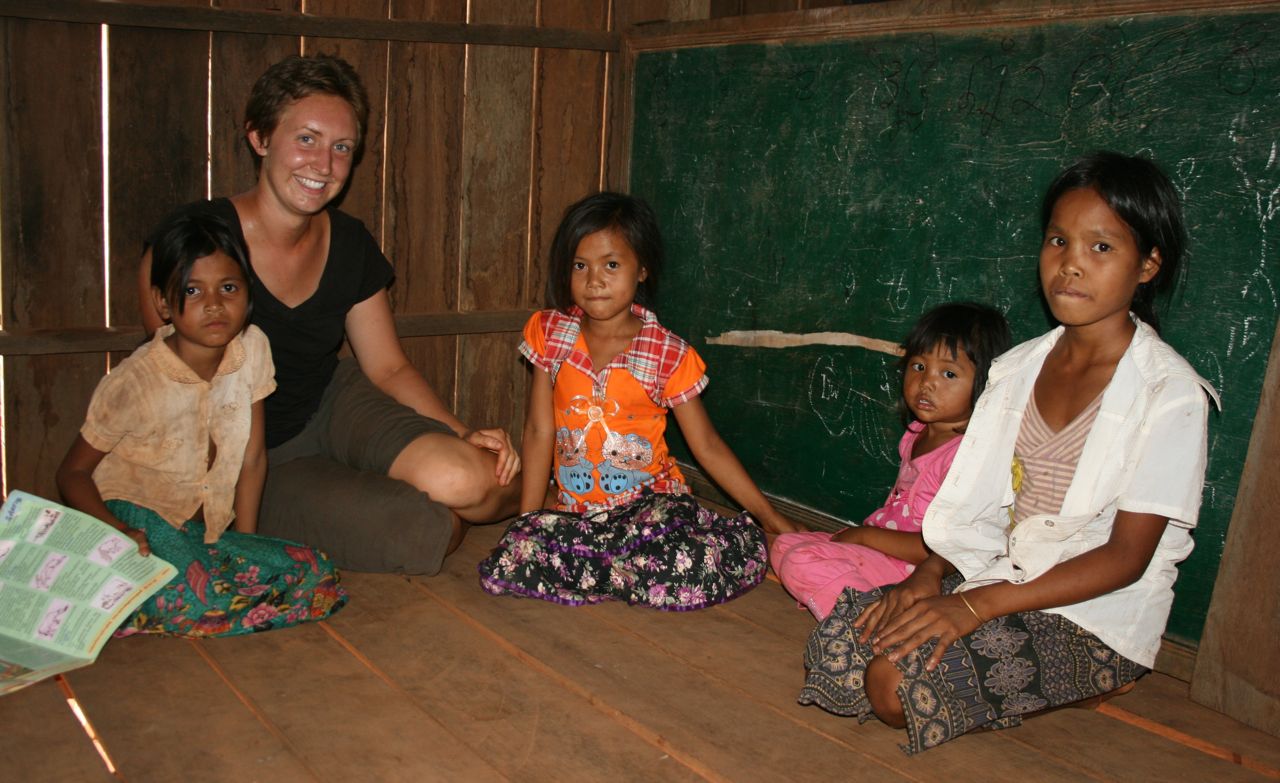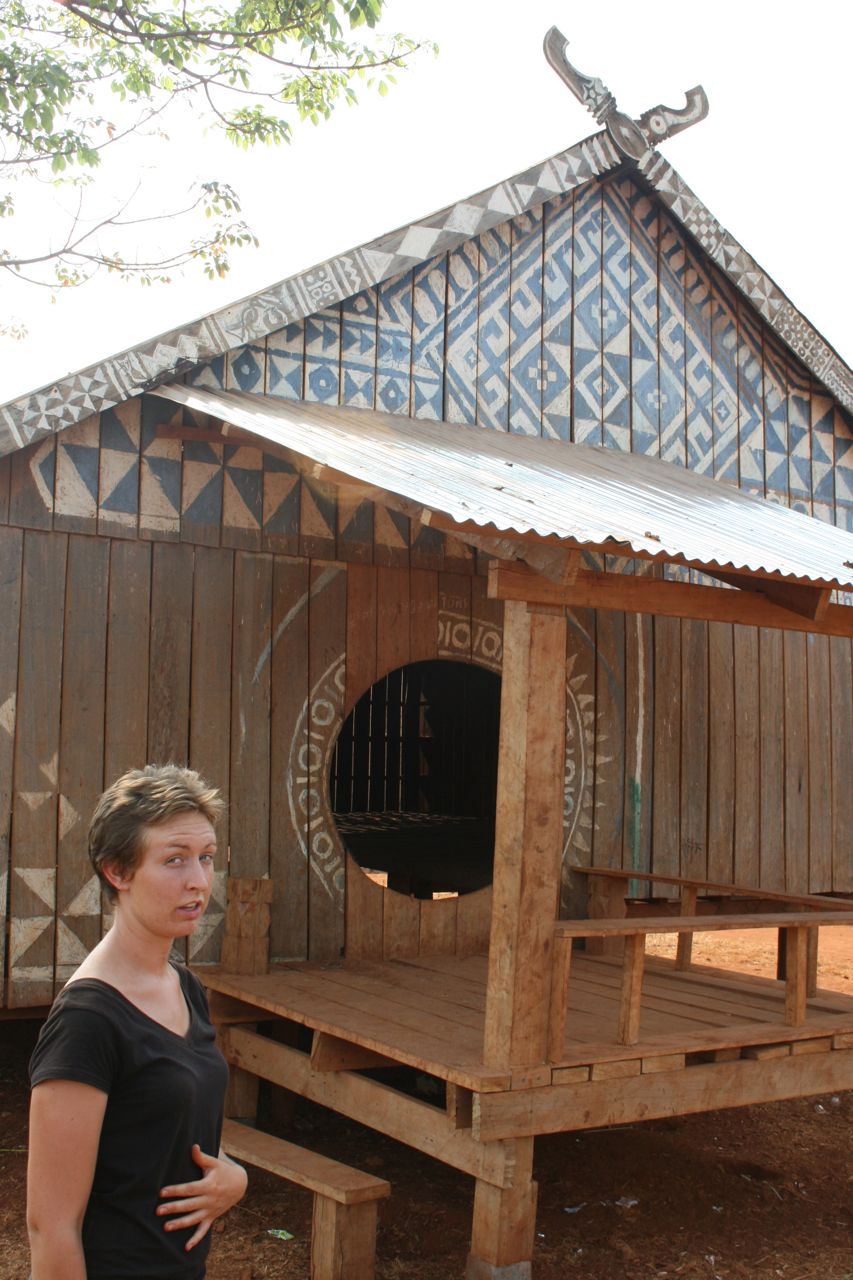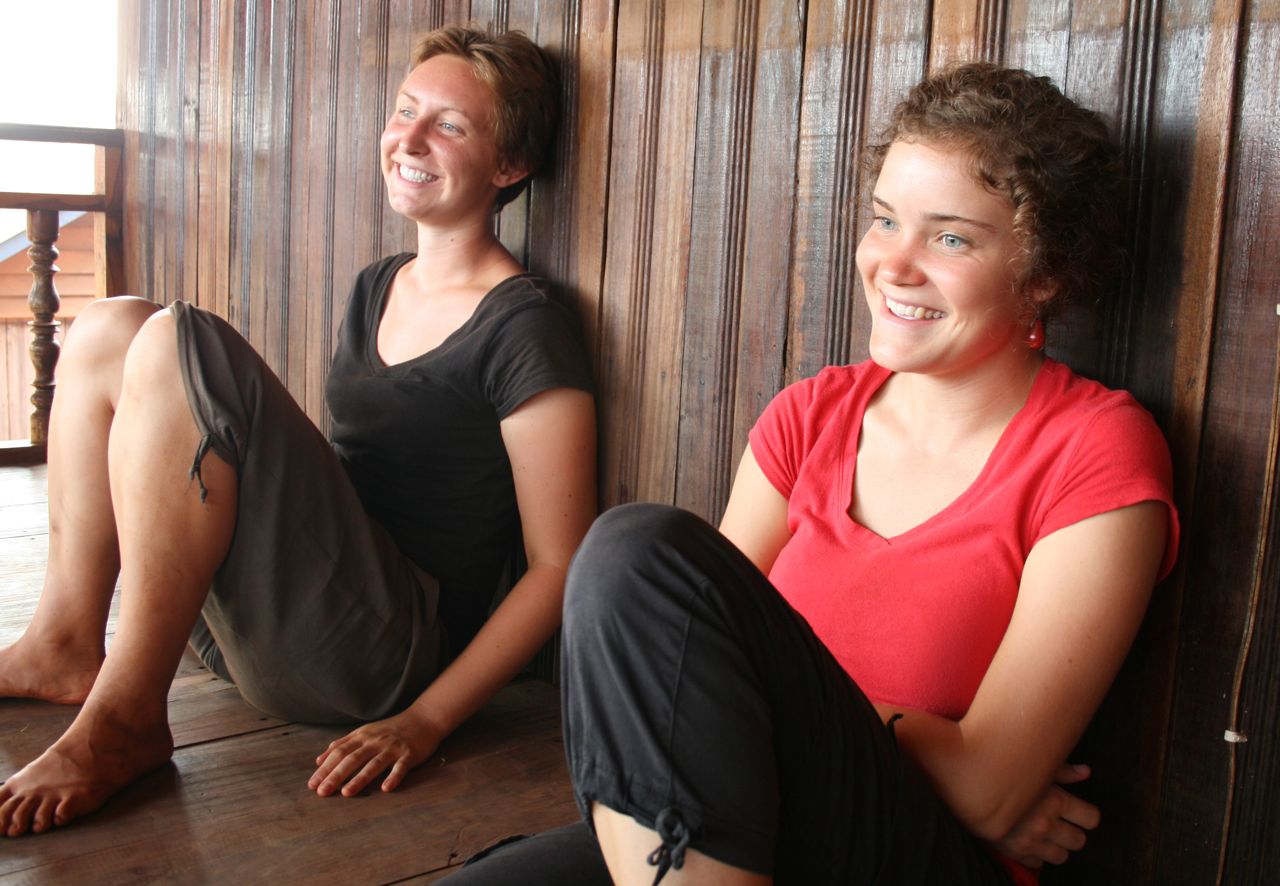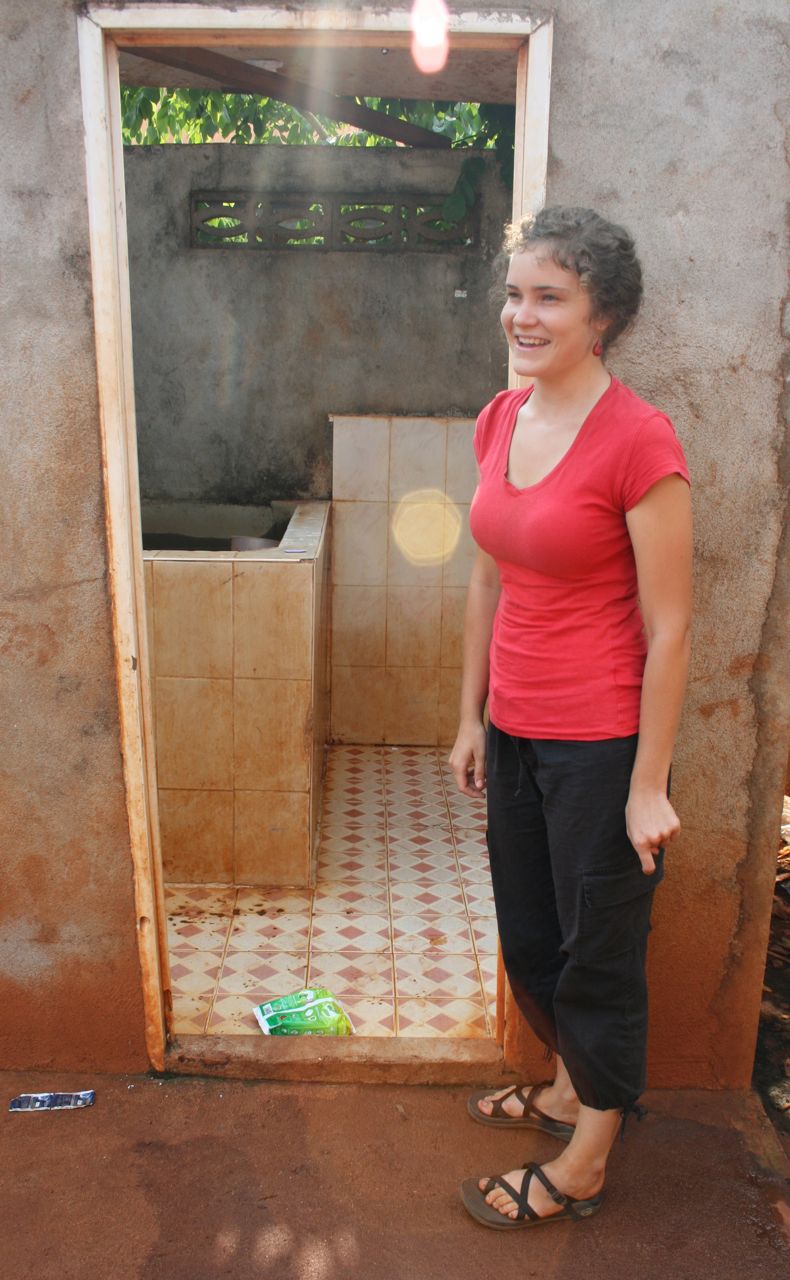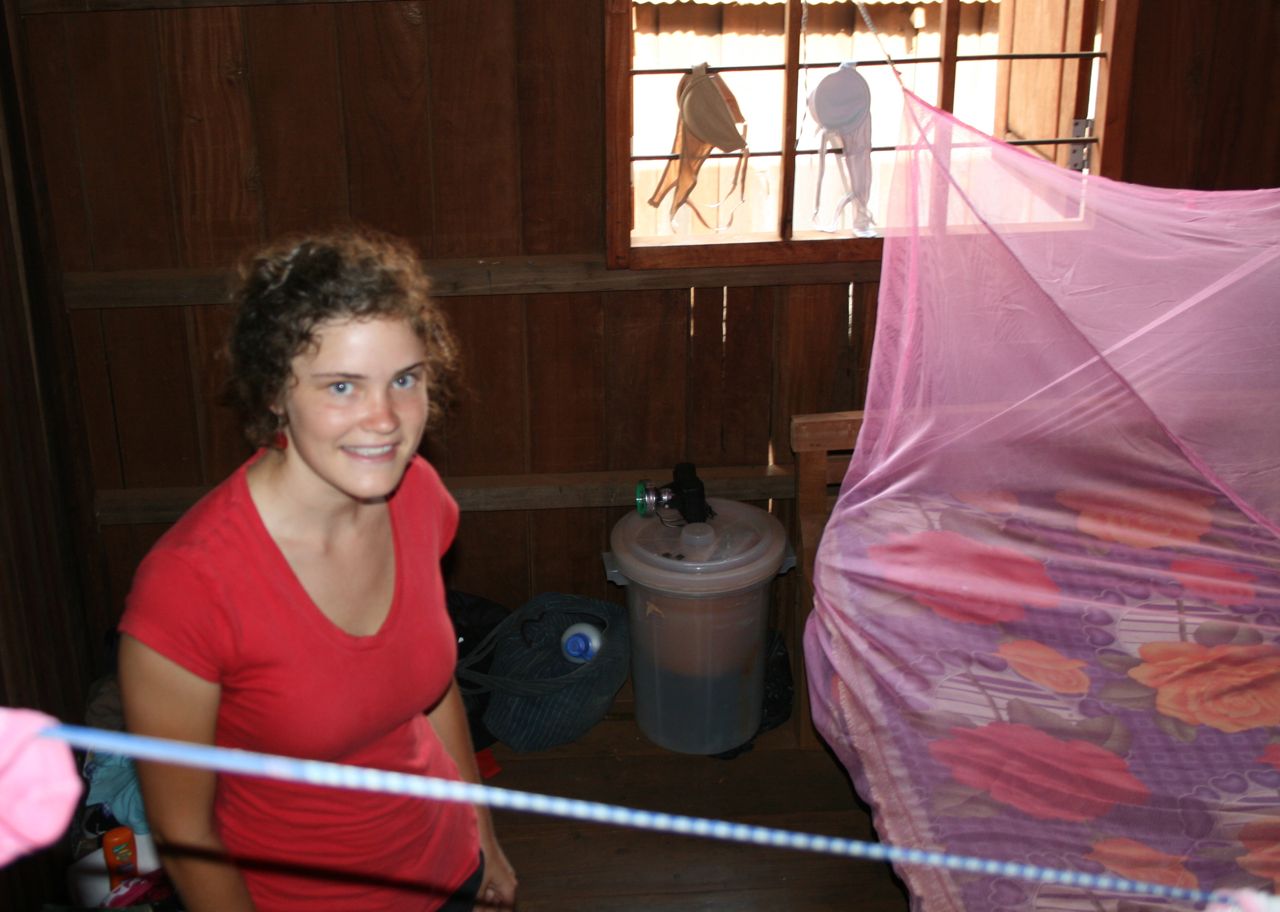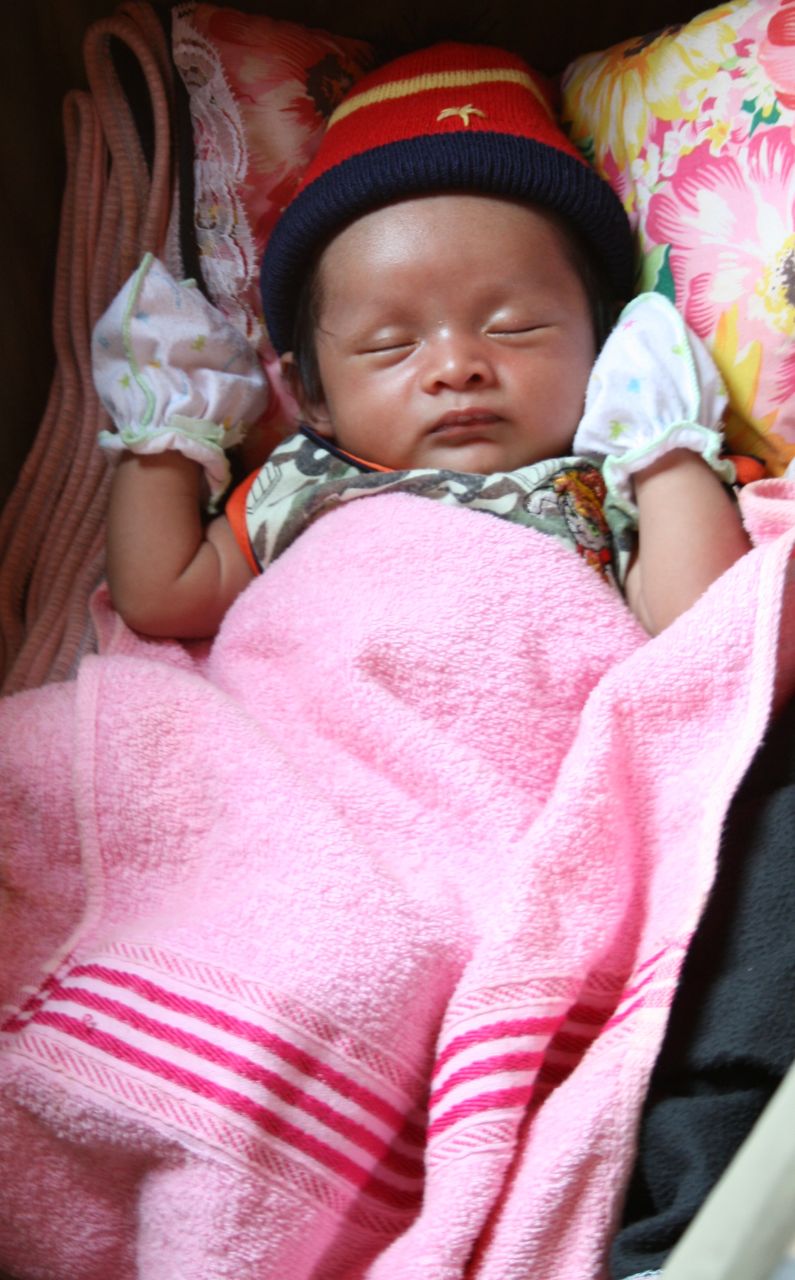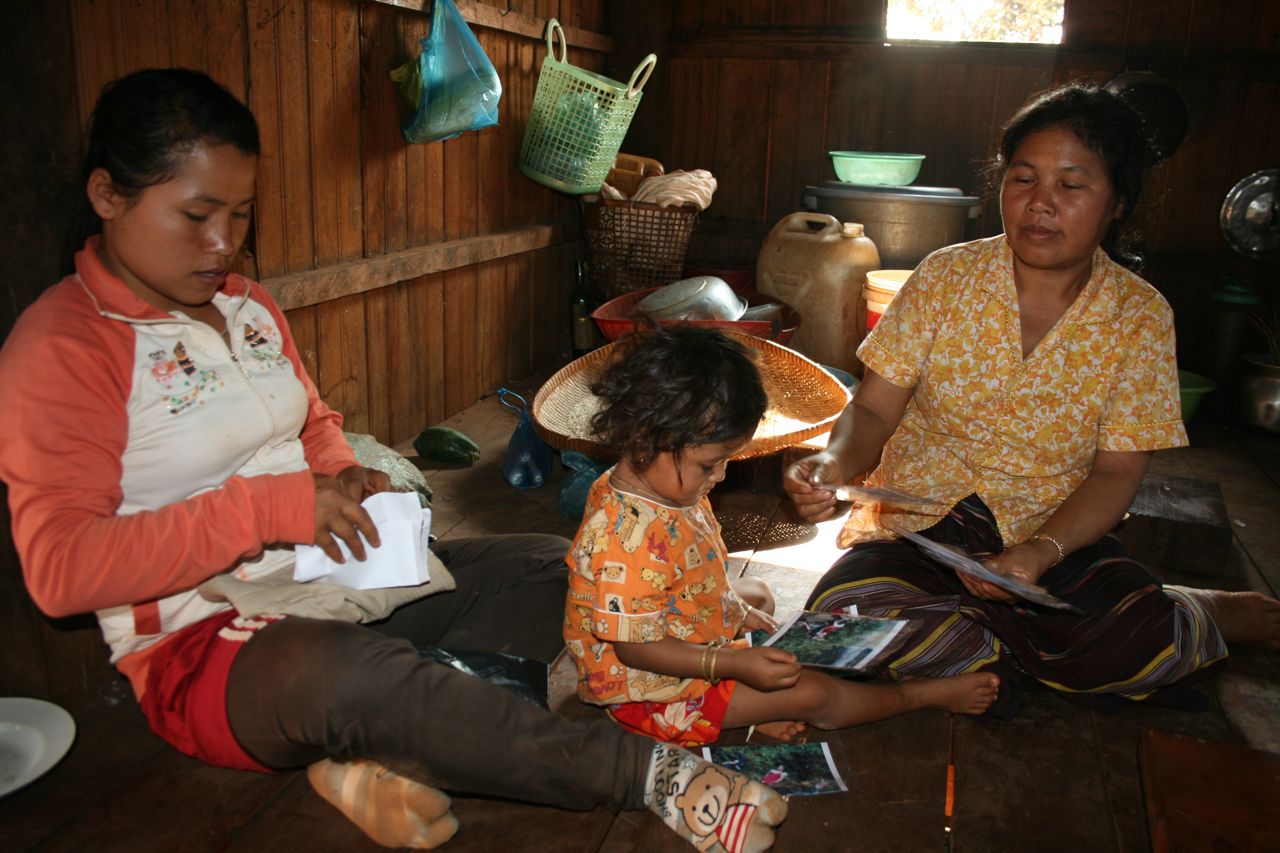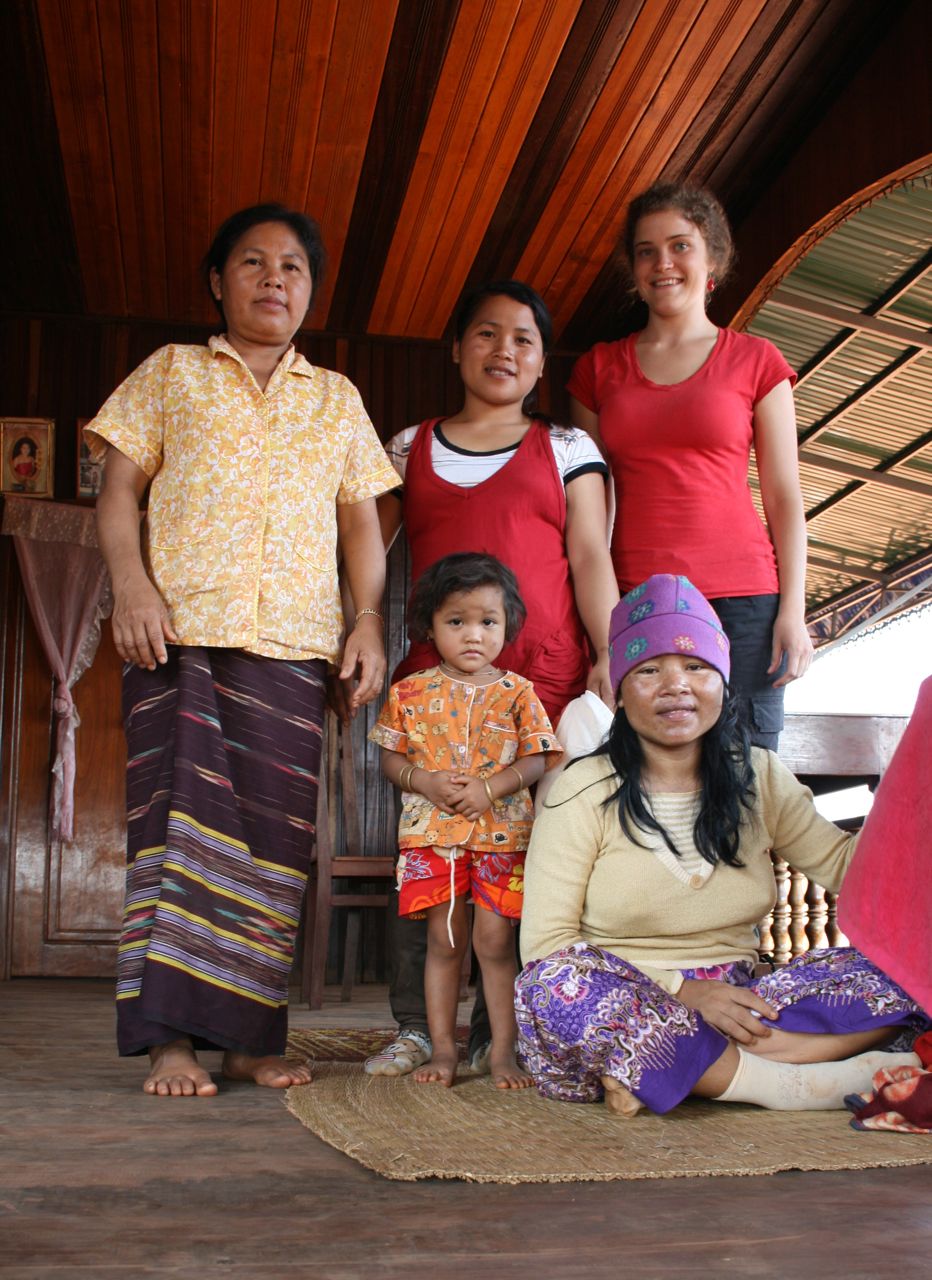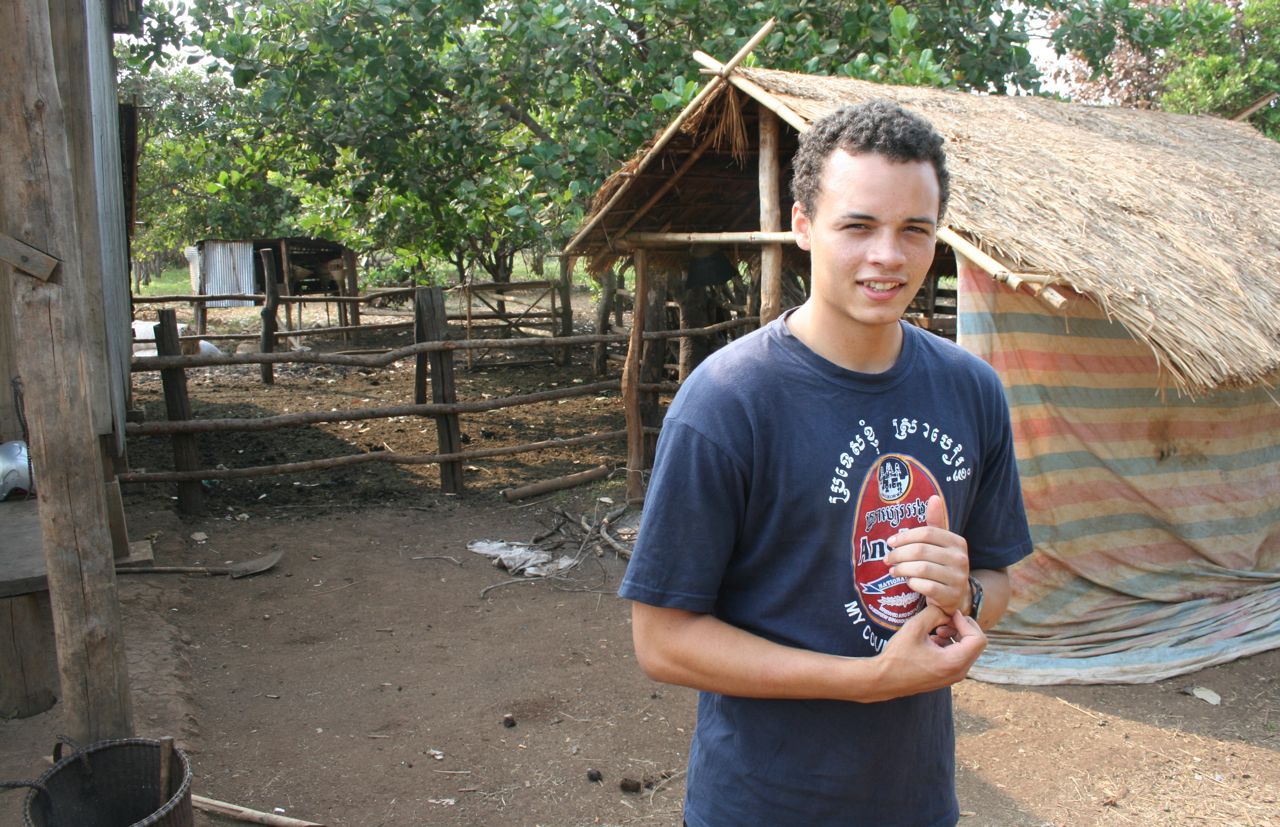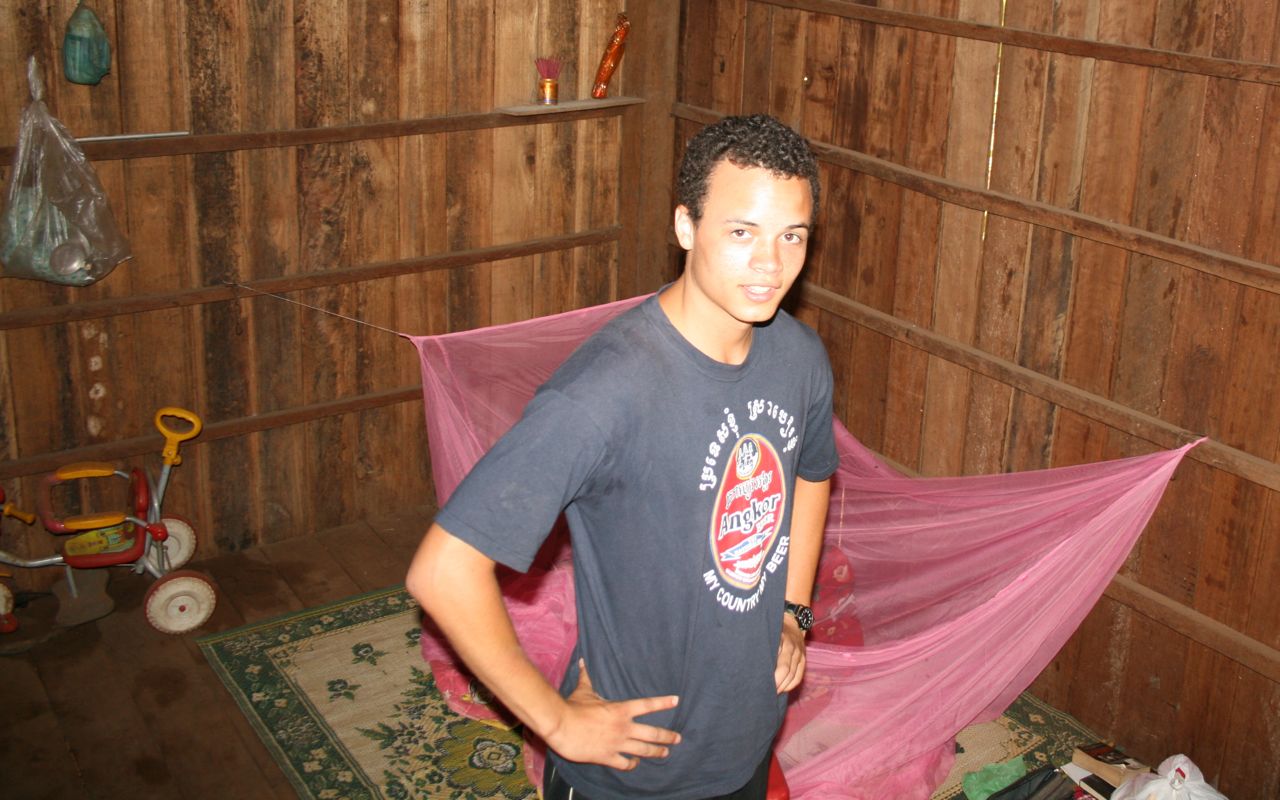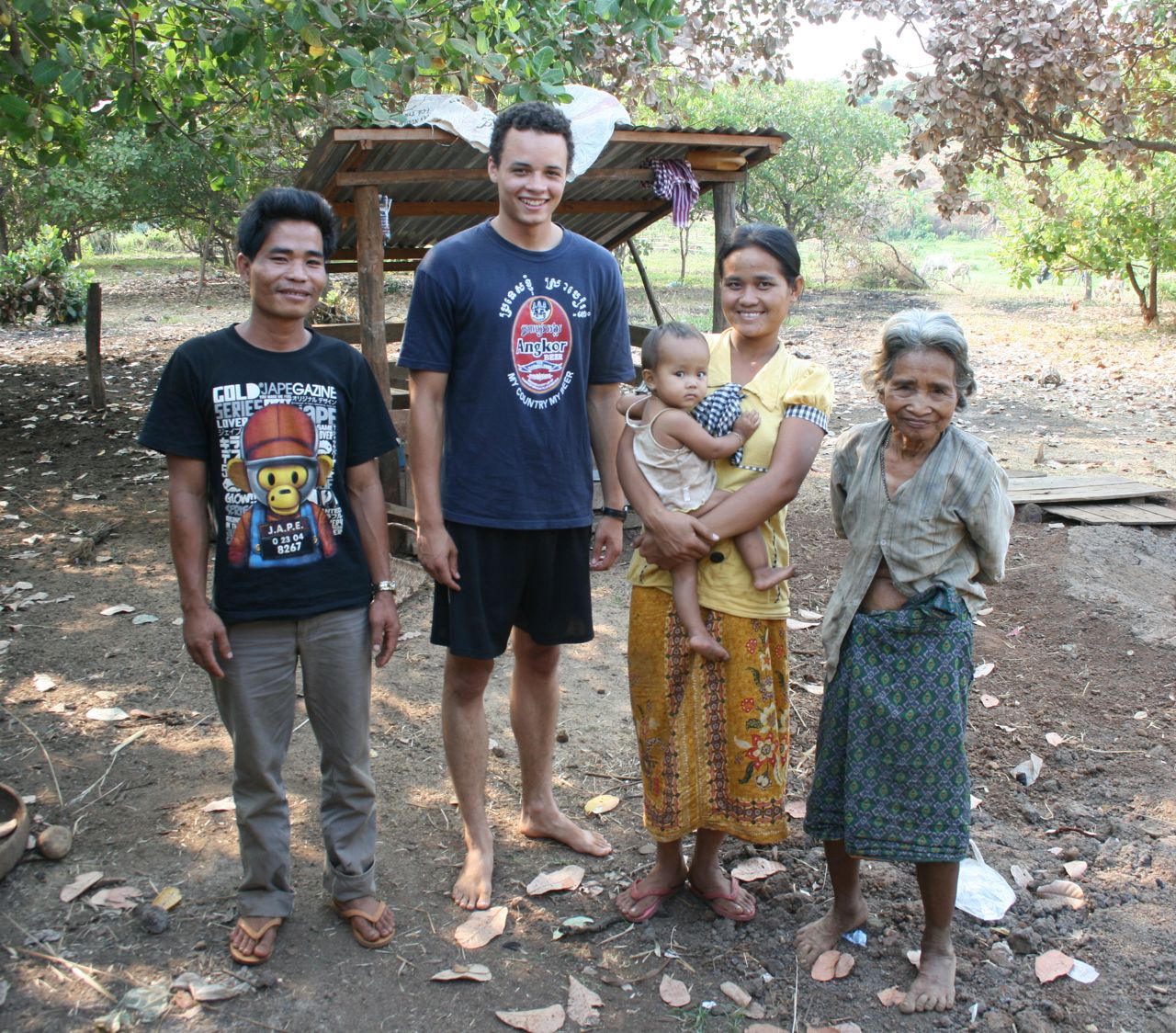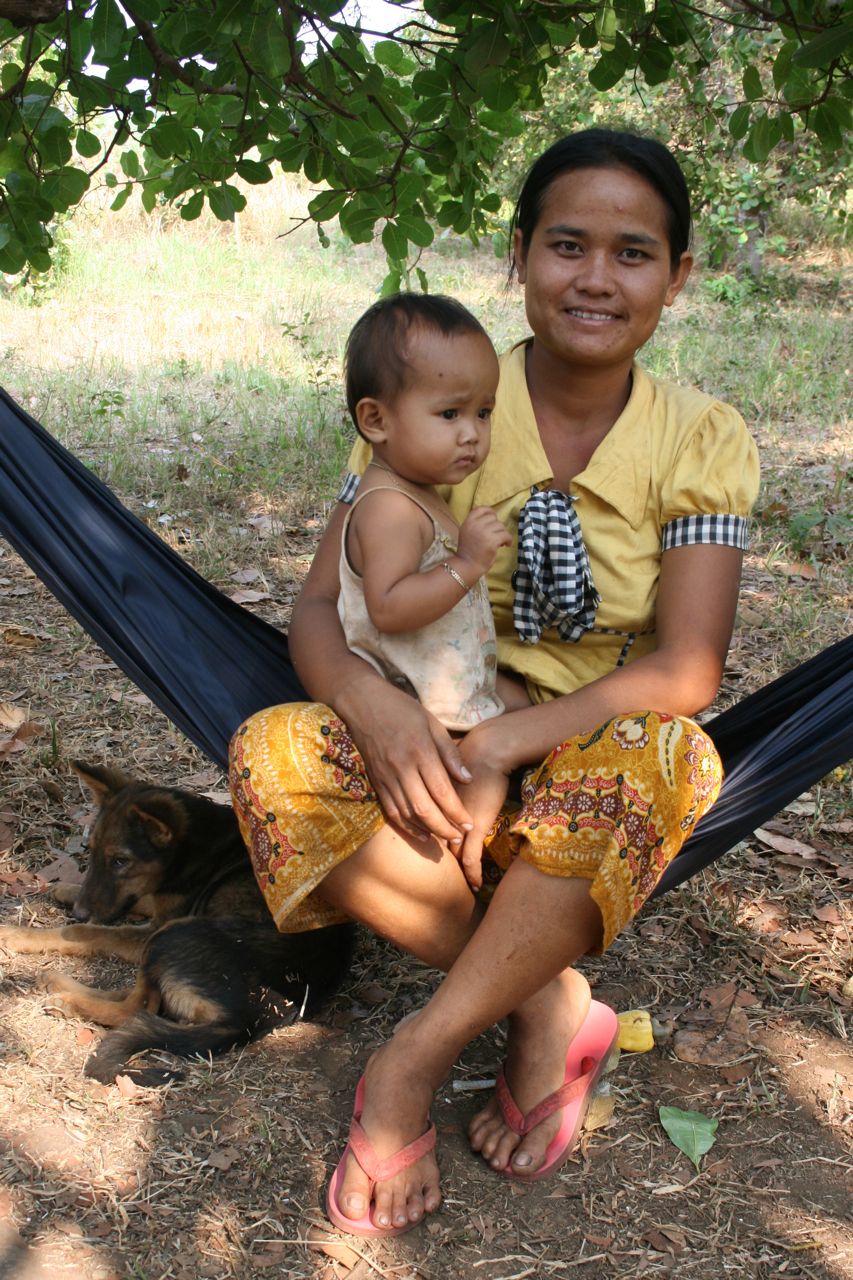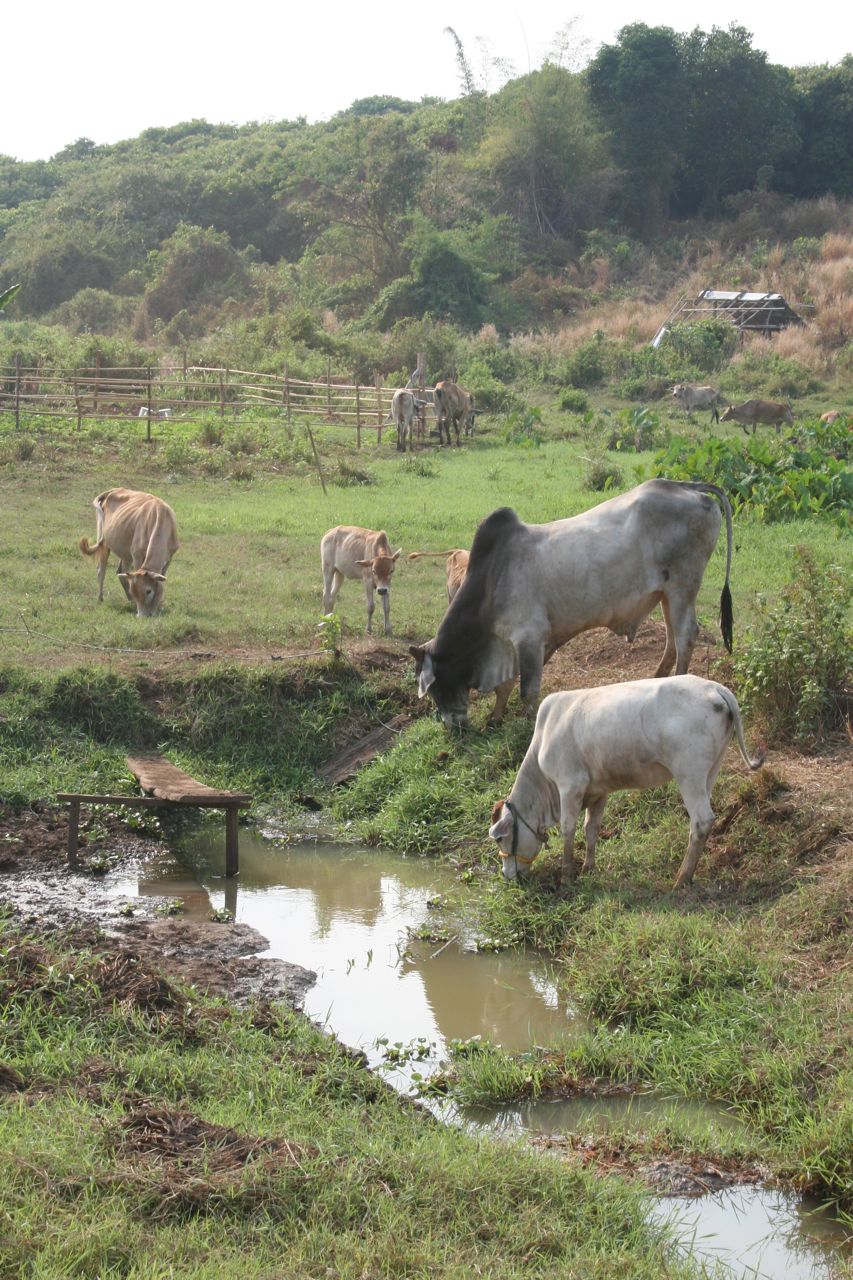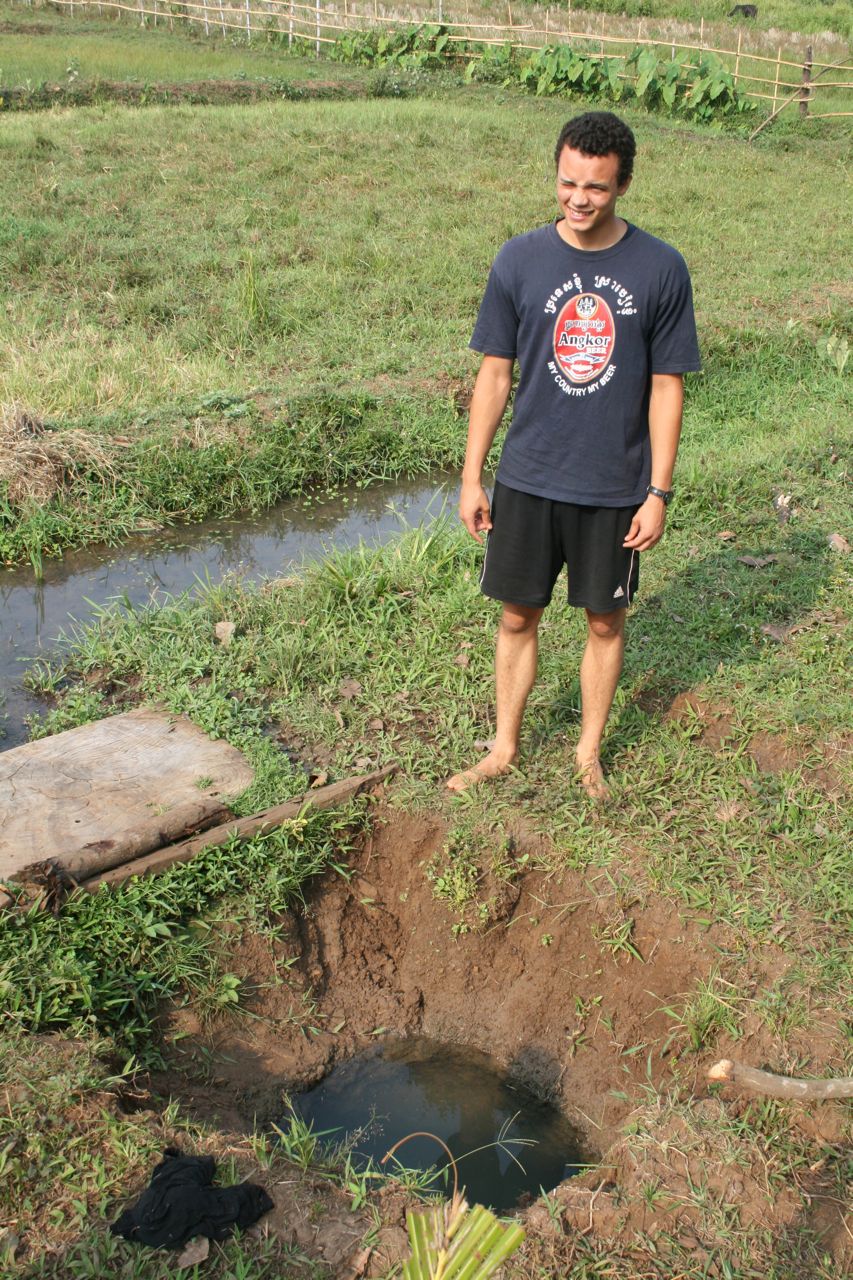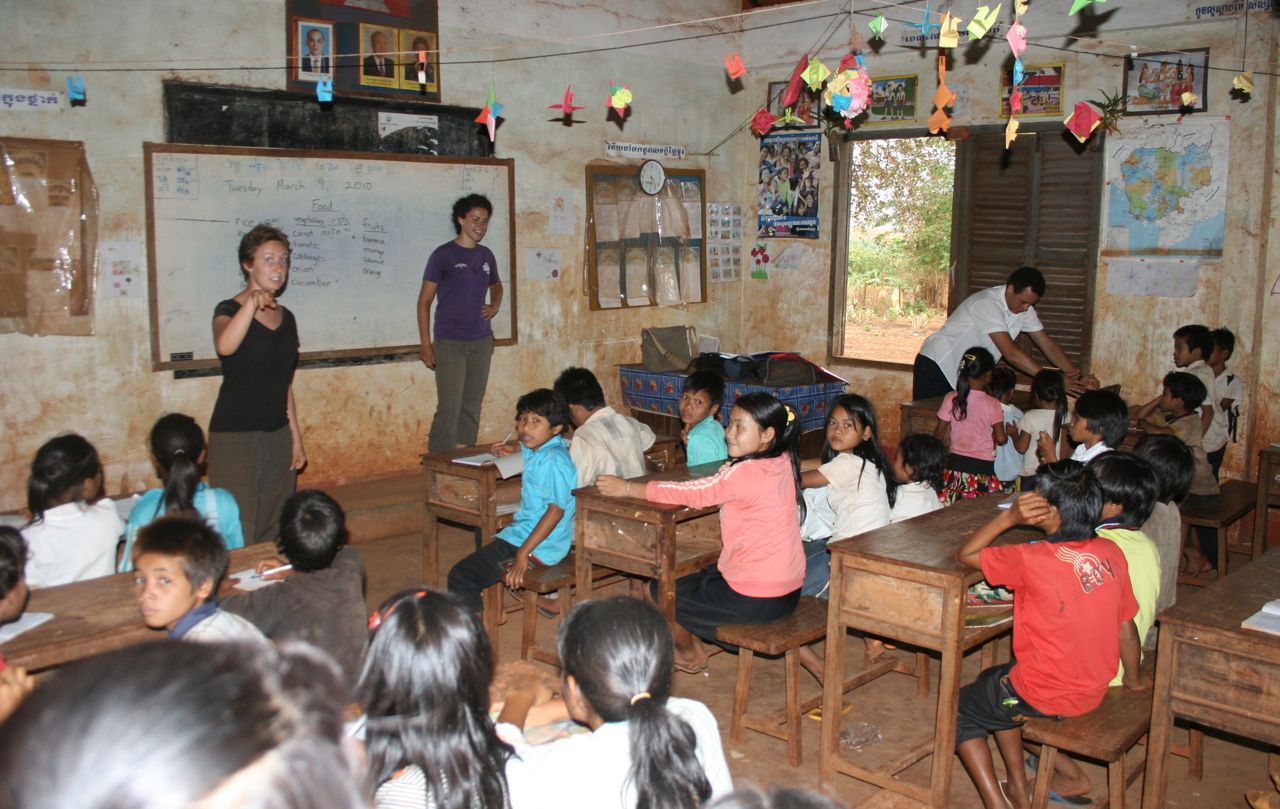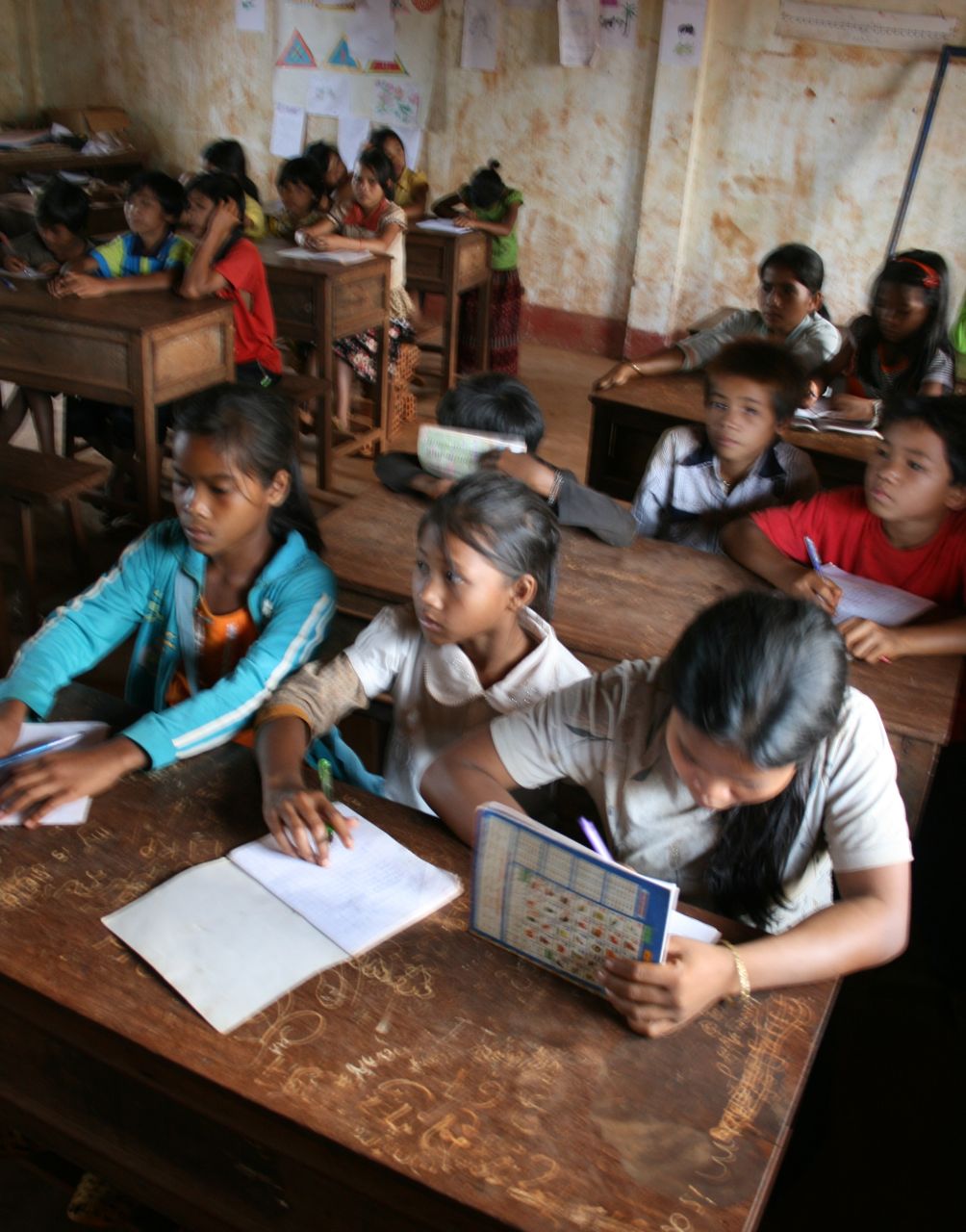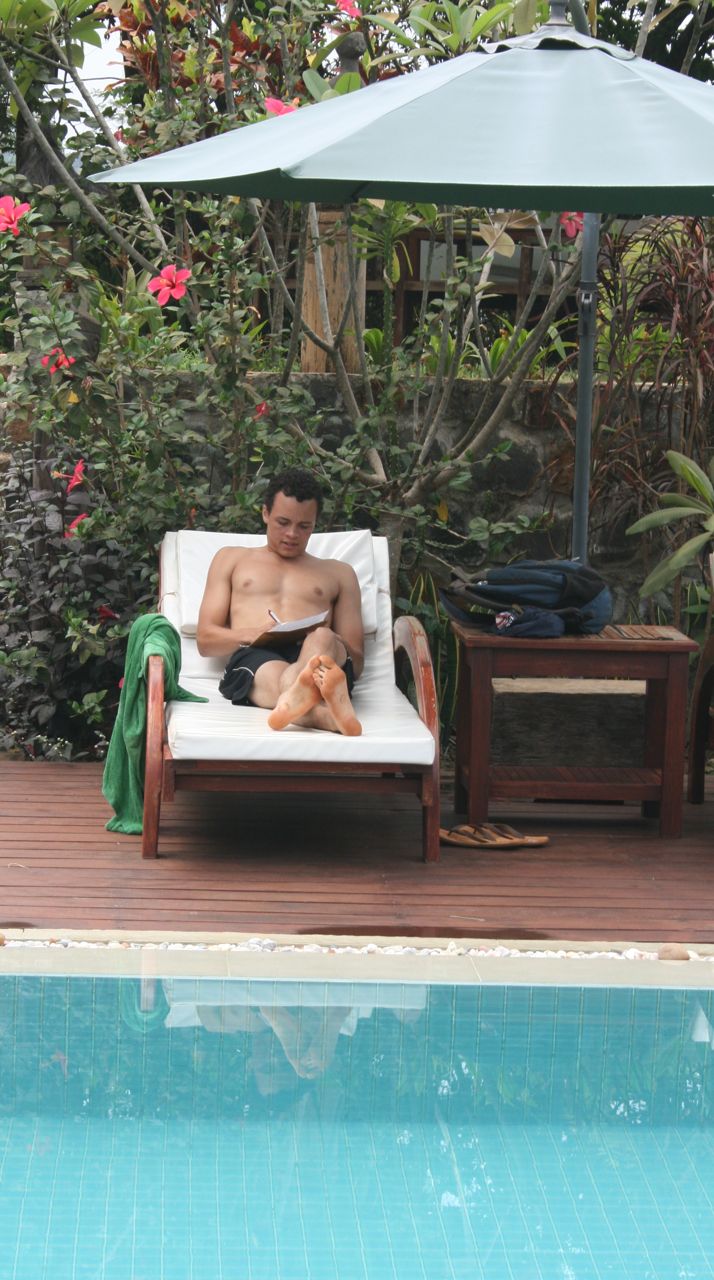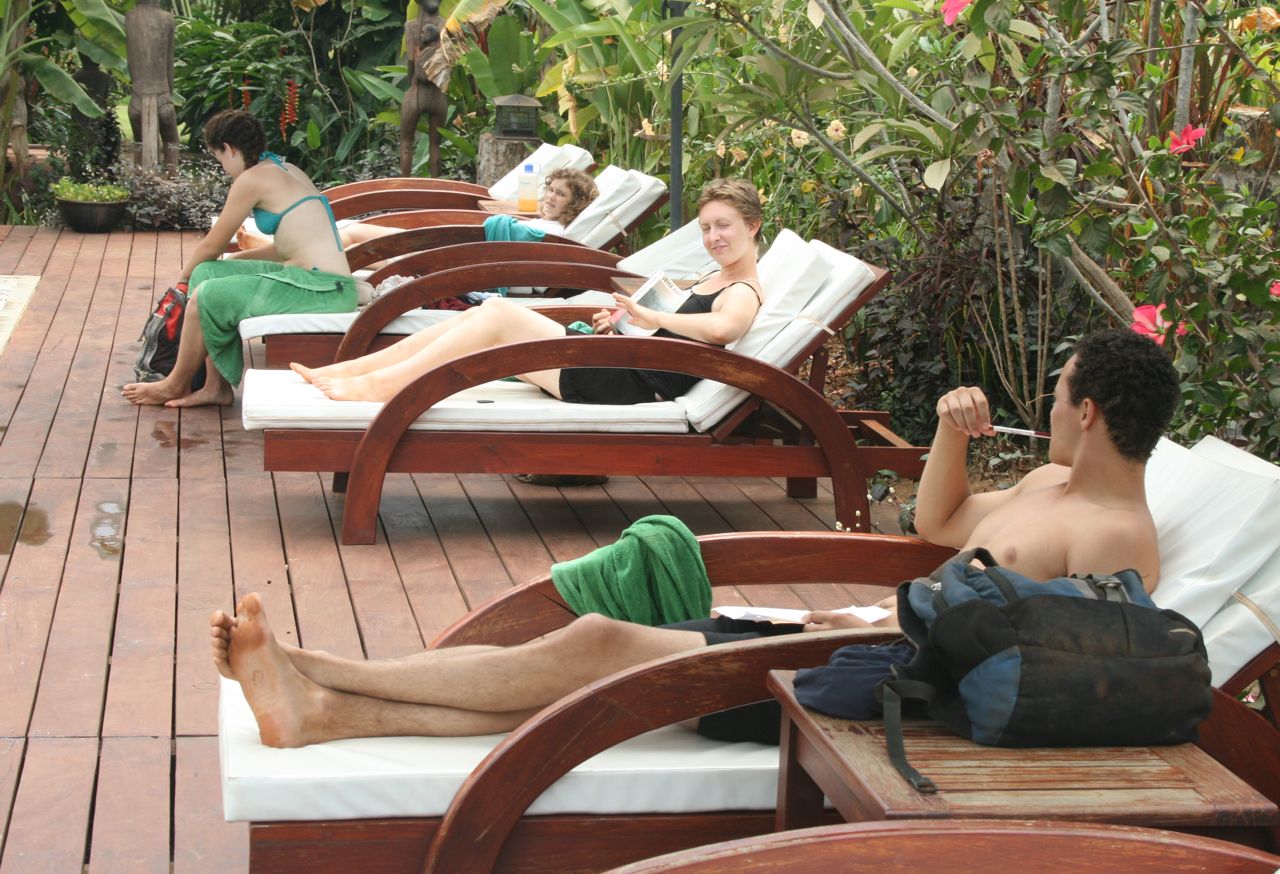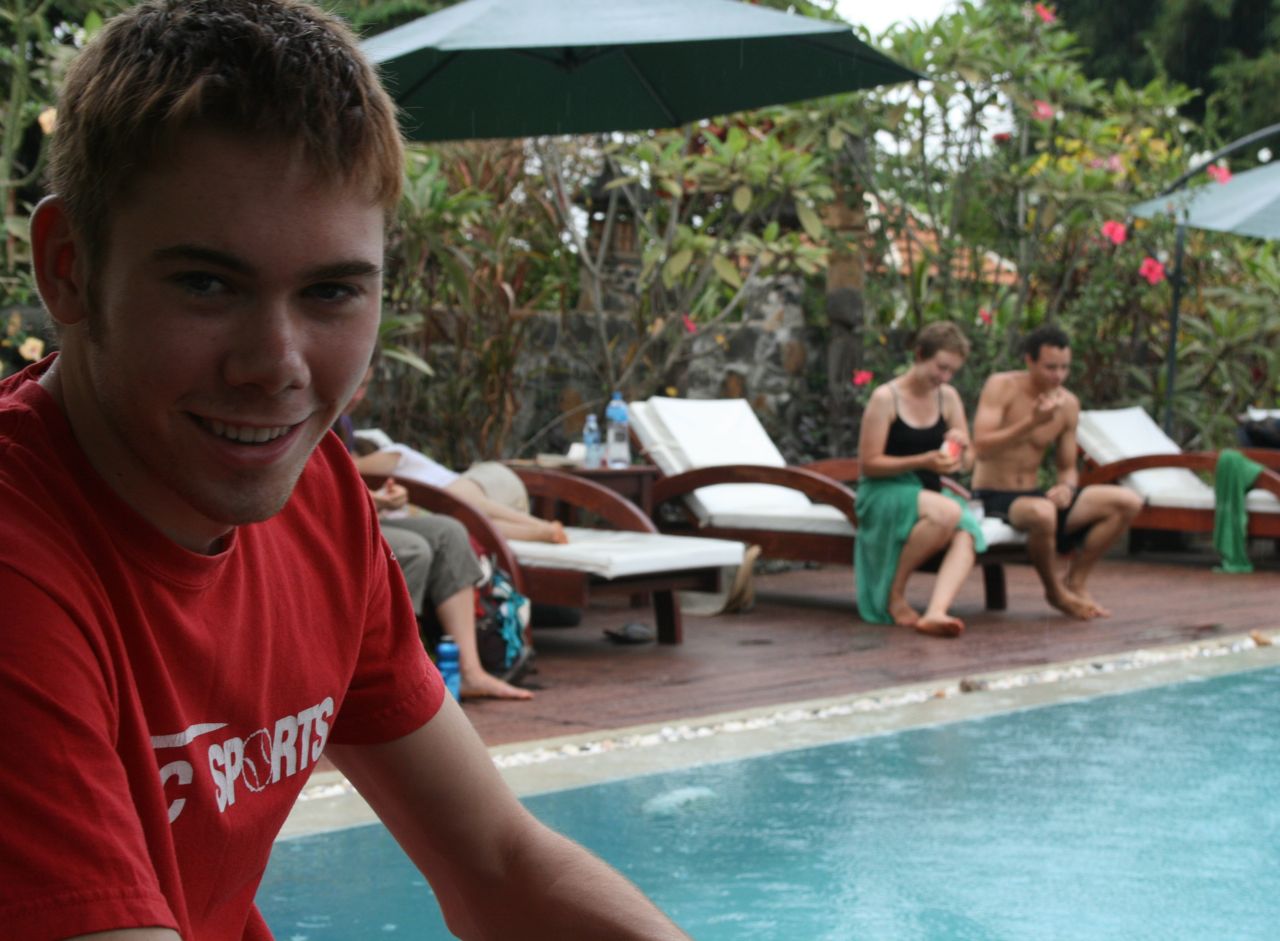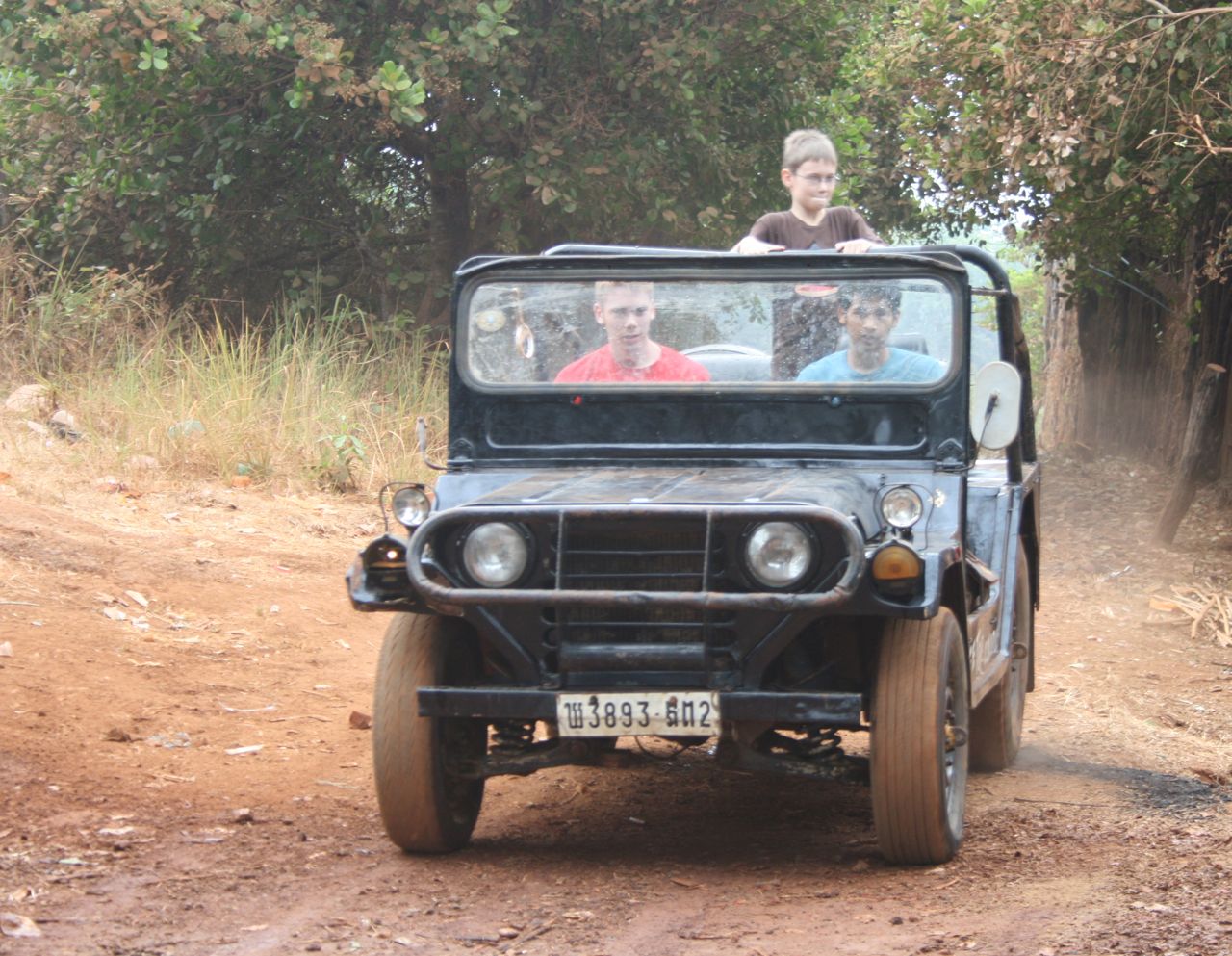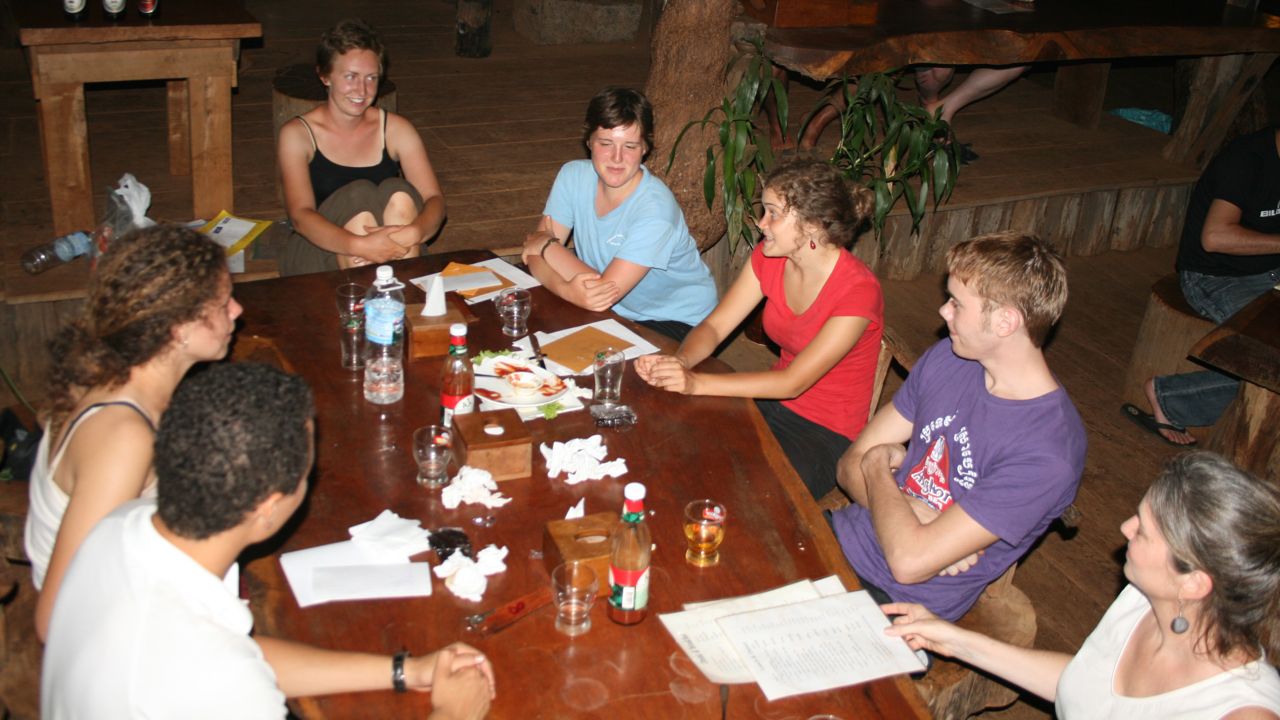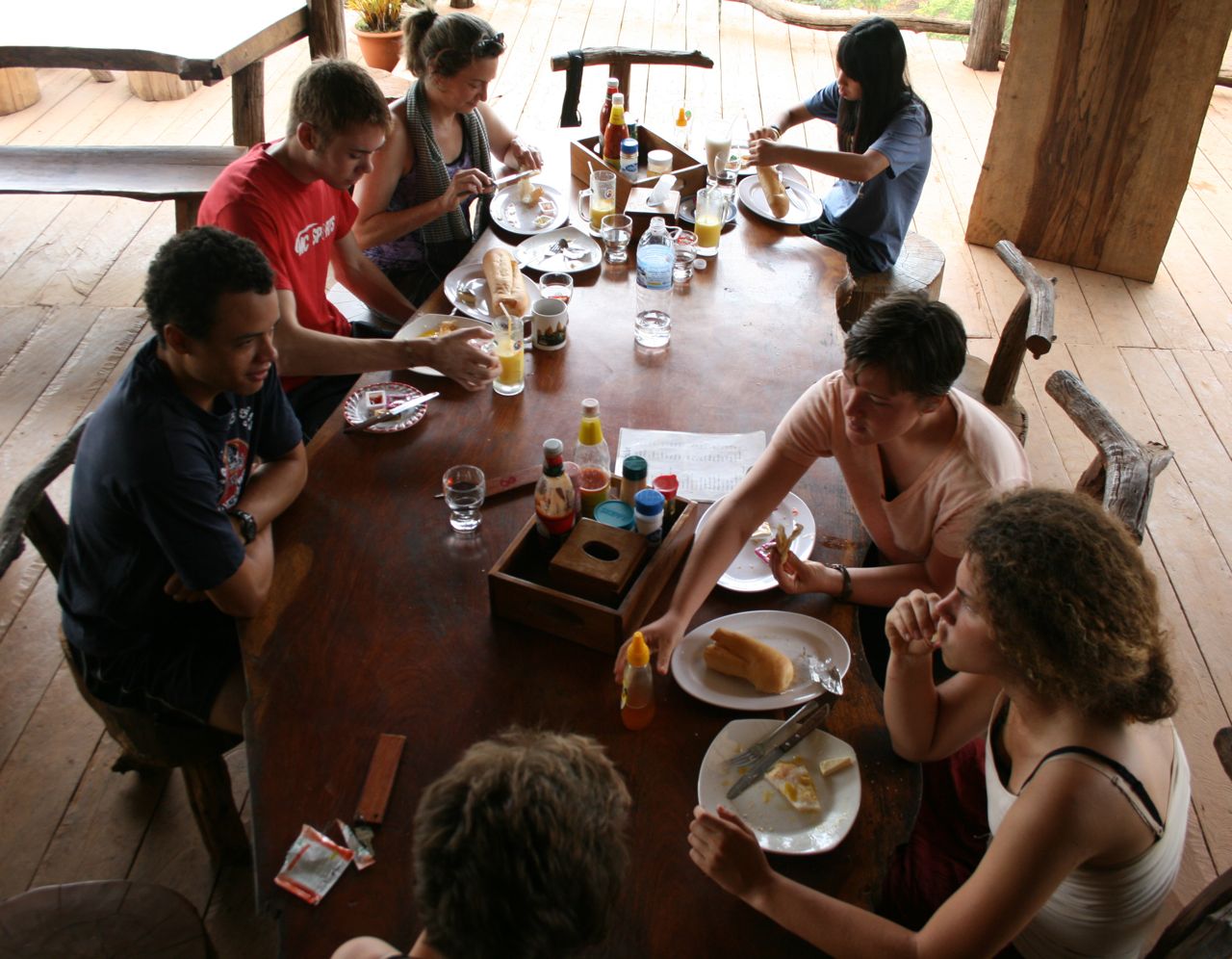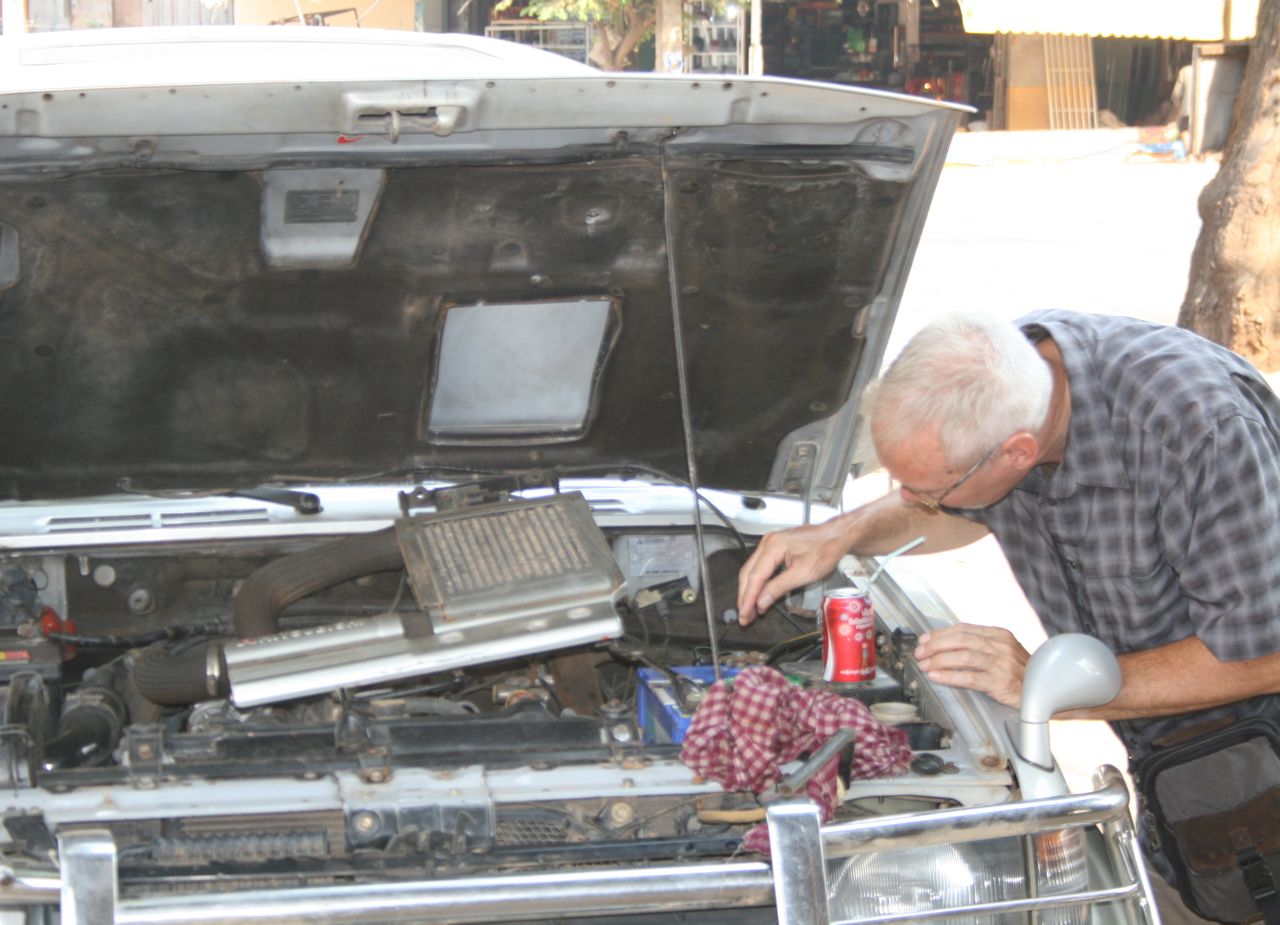Tampoun Villagers in Ratanakiri
This is the first of three posts we’ll be putting up today before heading out for another trip in the morning to see two more pairings of students. Last week the Graber Miller family took a six-day excursion to Ratanakiri Province in Cambodia’s uppermost northwest, adjacent to both Laos and Vietnam. There we saw Corinne, Chloe, Bailey, Sarah, and Seth in their indigenous Tampoun villages and Michael and Austin in their further-out Jarai village. On the return to Phnom Penh we visited Charlie and Jake in Kampong Cham, a Muslim village located along the Mekong River. Overall, the trip proved once again how flexible and culturally adaptable Goshen College students can be. Impressive.
Bailey, Seth, Chloe, Corinne, and Sarah live in five different Tampoun villages within 15-minute radius of each other, just outside of the capital of Banlung. About 18,000 Tampoun people — an ancient indigenous group that speaks Tampoun as its first language and Khmer as a second language — remain in Cambodia. Since few Tampoun people speak English, students have needed to use Khmer as their common second language, which has been a good challenge. In their villages, the primary work of Tampoun people is gathering cashews, weaving beautiful red-and-black homespun cloths, and gathering whatever foilage grows on their small farms.
All five students are teaching English as their specific service assignment, along with learning to know Tampoun culture and relating with their families. Bailey teaches on her own in her village, and the other four team-teach across the street from Sarah and Corinne’s village in the local Tampoun school. Since all of their formal teaching takes place in the evening, the students have their days fairly free for reading, relaxing, cooking with their families, and swimming at the nearby Crater Lake, which is a possession of the Tampoun people.
Bathroom facilities are spare in the Tampoun communities. All but Sarah have no bathroom at all in their villages (Sarah has a walled but open-air squat toilet), so the nearby tall grass is the site for moving bowels. Low-slung, free-roaming Vietnamese pigs then accommodate by cleaning up the remains immediately after the students finish their duties. Showers also take place in the open air (Sarah has a walled but open-air and doorless dump shower room), so students all took along kramas or sarongs that they wrap around themselves while they bathe. Seth and Bailey don’t have a water-holding basin of any sort for their showers; instead, they pull water from a dirt hole in the ground for their dump baths, usually using a hollowed-out gourd.
For most of the students, rice comes with every meal, as is true throughout Cambodia. Usually the rice is topped with some sort of greens, and often these are vines pulled from trees or some other free-growing plant their family collects. Occasionally the students get bits of meat — some chicken, a little pork. But they also have eaten more exotic foods, including snake, rat (Chloe’s meals frequently consist of rat), porcupine, squirrel, and dog.
The Graber Millers had dinner, breakfast, and lunch on Monday and Tuesday with the Tampoun Five before setting out to see Michael and Austin about 45 minutes from the Tampoun site. Throughout the six-day trip, the Graber Millers’ Pajero (which they had rented back in Phnom Penh) had extensive radiator problems that required frequent stops throughout the trip due to two broken hoses, a broken fan, and temporarily out-of-commission airconditioning.
Tampoun villagers have been quite welcoming, though to students they seem more shy or reserved than their Khmer families in the city. Overall, students are having a wonderful experience with these indigenous families, strengthening their Khmer and learning some Tampoun as well.
